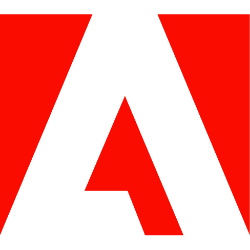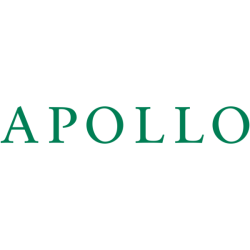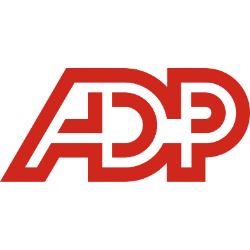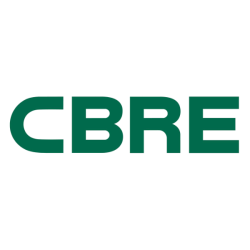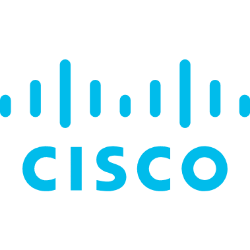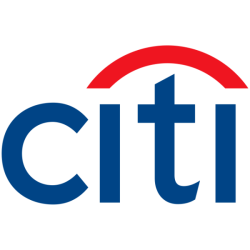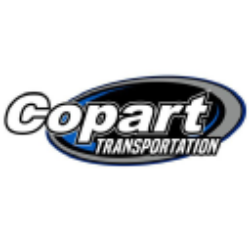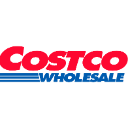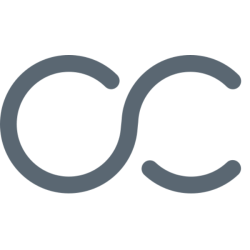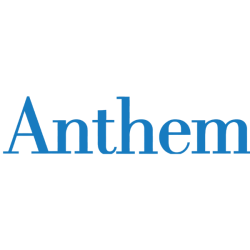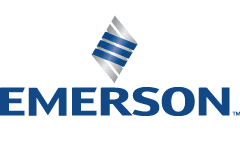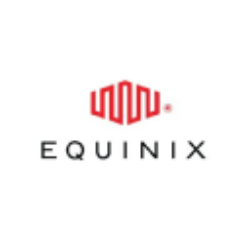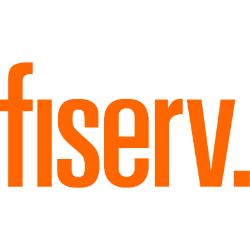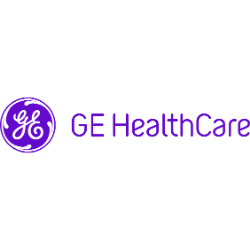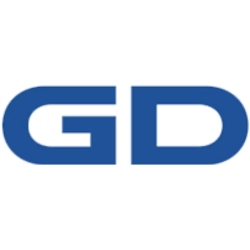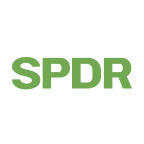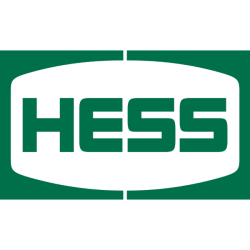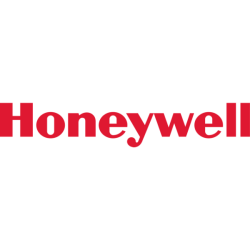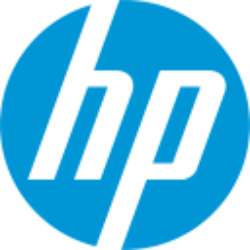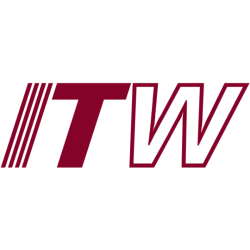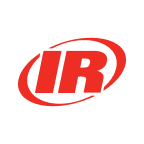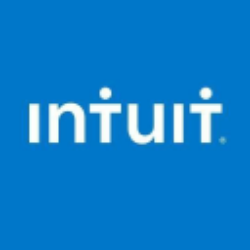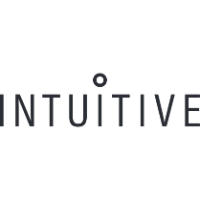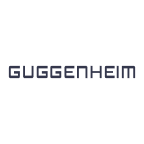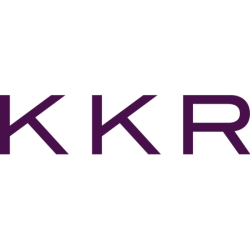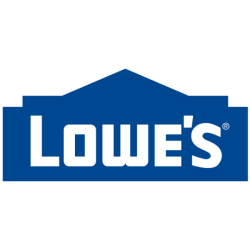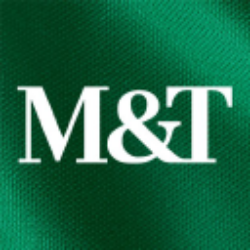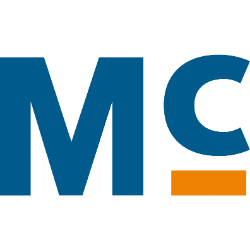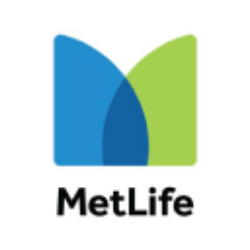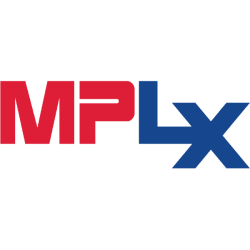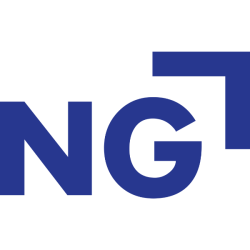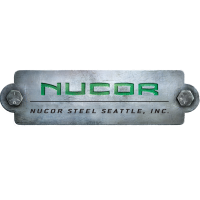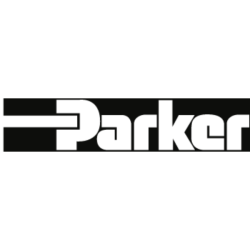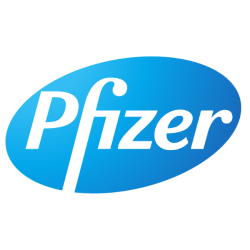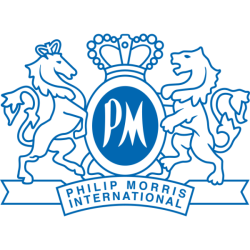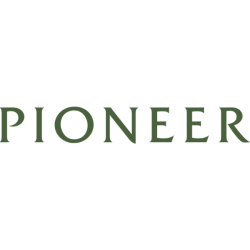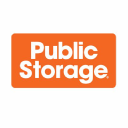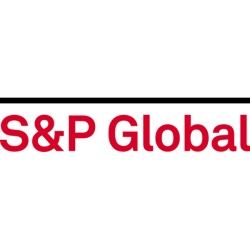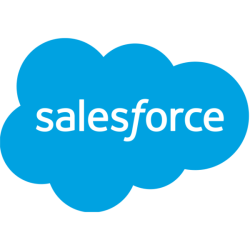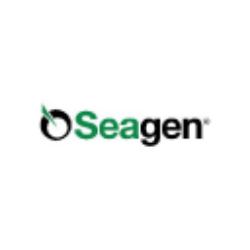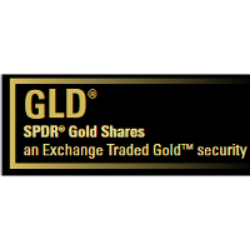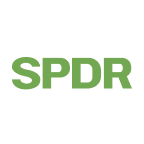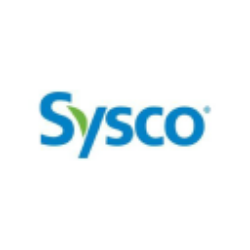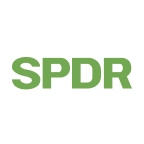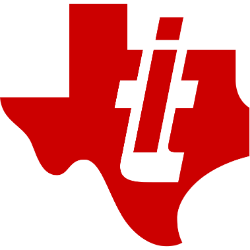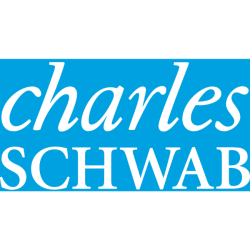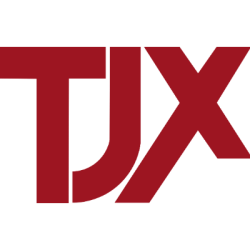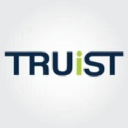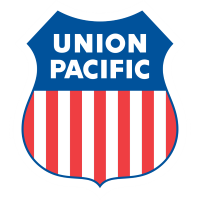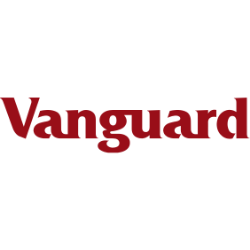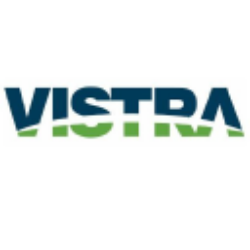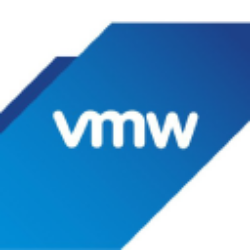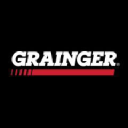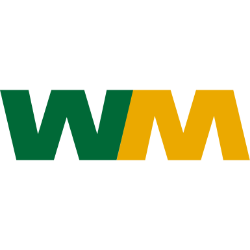Updated: June 7, 2025

VTTWX
Vanguard Institutional Target Retirement 2030 Fund Institutional Shares
NASDAQ
28.83
-0.24

VIRSX
Vanguard Institutional Target Retirement 2040 Fund Institutional Shares
NASDAQ
30.89
-0.36

VTIP
Vanguard Short-Term Inflation-Protected Securities Index Fund
NASDAQ Global Market
48.87
0.01
We have not found the stock you are looking for
Ticker
Loading
Market Cap
Loading
Revenue
Loading
EPS
Loading
PE Ratio
Loading
Volume
Loading
Dividend
Loading
Week Range
Loading
Beta
Loading
Frameworks
Name
Score
Company Overview
Loading
Merck & Co., Inc.
Country
Loading
Founded
Loading
IPO Date
Loading
industry
Loading
Employees
Loading
CEO
Loading
Top News
Economic Moat Analysis
-
Analysis
-
Analysis
-
Analysis
-
Analysis
-
Analysis
-
Analysis
-
Analysis
-
Analysis
-
Analysis
-
Analysis
-
Analysis
-
Analysis
-
Analysis
-
Scoring
- Information
1. 10Y Growth Analysis
Score: 8.6 (Strong)
The overall score reflects MRK's steady to high projected growth driven by its robust pipeline, strategic partnerships, and diversification efforts. The company's focus on R&D, market expansion, and sustainability initiatives positions it well for long-term success and resilience against market challenges.
2. Scenario Analysis
Score: 7.1 (Strong)
This score reflects MRK's resilience in most scenarios, particularly in technological disruption and market expansion. Despite challenges in an economic downturn and stress scenarios, the company shows strong adaptability and strategic positioning. Score without stress scenario: 7.8 – Resilient
3. Risk & Opportunities
Score: 7.2 (Strong)
The overall score reflects a strategic position where MRK faces moderate risks, particularly from regulatory and patent challenges, but these are balanced by strong opportunities in innovation, market expansion, and strategic partnerships. The company's proactive approach in addressing these risks while capitalizing on growth areas contributes to a favorable outlook.
4. Economic Moat
Score: 8.0 (Strong)
The overall score for Merck is Strong, primarily due to its wide economic moat from intangible assets and strong positions in cost advantages, switching costs, and efficient scale. Merck's robust patent portfolio, brand recognition, and strategic market positioning provide it with durable competitive advantages that are expected to sustain its market leadership.
5. Business Model
Score: 8.1 (Strong)
Merck demonstrates a strong business model characterized by its innovative product offerings, robust R&D pipeline, and strategic global presence. While the company faces significant R&D and compliance costs, its diversified revenue streams and strong customer relationships bolster its market position.
6. Management Analysis
Score: 8.2 (Strong)
The overall score reflects MRK's competent management team, marked by strong leadership, strategic vision, and operational efficiency. The company has demonstrated robust innovation capabilities, adaptability to market changes, and a commitment to sustainability, positioning it well for future growth. Leadership stability and effective governance further enhance its strategic execution.
7. BCG Matrix
Score: 8.5 (Strong)
Merck (MRK) demonstrates a strong strategic position with several high-performing products, especially in oncology and vaccines, driving its overall success. While some products face challenges due to patent expirations and increased competition, the company's diversified portfolio and innovation pipeline ensure robust market presence and growth potential.
8. SWOT Analysis
Score: 7.0 (Strong)
Merck demonstrates strong strengths and opportunities, notably in R&D and market presence, balanced by challenges in patent expirations and regulatory environments. The company is well-positioned for growth with strategic initiatives, though it must navigate competitive and regulatory threats.
9. Porter's 5 Forces
Score: 6.5 (Balanced)
Merck operates in a moderately competitive environment with low threat from new entrants and substitutes, but moderate bargaining power from suppliers and buyers. Industry rivalry remains moderate, driven by innovation and strategic moves.
10. PESTLE Analysis
Score: 7.5 (Strong)
Merck's strategic position is predominantly positive, with strong performance in technological advancements and economic factors. Political stability and favorable healthcare legislation further support its growth. However, legal and environmental considerations present both challenges and opportunities, necessitating strategic management to maintain its competitive edge.
11. ESG Analysis
Score: 8.2 (Strong)
Merck displays strong ESG performance across all criteria, with particular strengths in social responsibility and governance. The company demonstrates a solid commitment to sustainability and ethical business practices, though there is room for improvement in specific environmental areas such as biodiversity conservation.
12. Company Milestones
Score: 0.0 (No rating available)
No summary available.
Final Overall Score
Score: 7.6 (Strong)
The Final Overall Score of 7.6 for the stock ‘MRK’ suggests a positive assessment of its general performance, strengths, and outlook. This score indicates that the stock is considered a relatively strong performer in the market. Here’s a breakdown of what contributes to this score: 1. **General Performance**: MRK has likely shown consistent financial performance, with stable or growing revenue and earnings. This stability is often reflected in favorable historical stock price trends and market capitalization. 2. **Strengths**: The company might possess strong competitive advantages such as a robust product pipeline, particularly in the pharmaceutical sector, where innovation and patent protection play critical roles. It might have effective management, solid financial health, and operational efficiency, all contributing to a high-performance rating. 3. **Outlook**: The outlook for MRK appears promising, potentially due to strategic growth initiatives, expansion into new markets, or successful research and development that positions it well for future growth. Favorable macroeconomic factors or industry trends could also be positively impacting its future prospects. Overall, a score of 7.6 suggests that MRK is perceived as a strong investment opportunity with sound fundamentals and a positive future outlook, making it attractive to investors seeking stable growth.
Future Outlook
To provide a concise future outlook for the stock ‘MRK’ (Merck & Co., Inc.), it’s important to consider several factors, including the company’s current performance, market conditions, and industry trends. While I don’t have access to real-time data or specific framework scores, I can offer a general perspective based on typical analyses. 1. **Financial Performance**: If Merck has shown strong financial performance, with solid revenue growth and profitability, this can be a positive indicator for future stock performance. Consistent earnings growth and a robust pipeline of new products, especially in pharmaceuticals, can enhance investor confidence. 2. **Product Pipeline and Innovation**: Merck’s success heavily relies on its ability to innovate and bring new drugs to market. A strong pipeline of drugs, especially in high-demand areas like oncology and vaccines, can significantly boost future prospects. 3. **Market Conditions**: The broader market environment, including economic conditions, interest rates, and investor sentiment, can impact MRK’s stock performance. A favorable economic climate with growing demand for healthcare products can be advantageous. 4. **Regulatory Environment**: Changes in healthcare regulations and policies can affect Merck’s operations. A stable regulatory environment tends to be beneficial, whereas significant changes might pose challenges. 5. **Competitive Landscape**: The pharmaceutical industry is highly competitive. Merck’s ability to maintain a competitive edge through innovation, strategic partnerships, and effective marketing strategies is crucial for its future outlook. 6. **Global Expansion**: Opportunities for growth in international markets can be a positive factor. Merck’s ability to expand its global footprint and tap into emerging markets can drive long-term growth. 7. **Sustainability and ESG Factors**: Increasing importance is placed on environmental, social, and governance (ESG) factors. Merck’s commitment to sustainability and ethical practices can impact investor perceptions and influence its stock performance. Overall, a positive future outlook for MRK would likely be based on strong financial health, a promising product pipeline, favorable market conditions, and effective management strategies. However, it’s important for investors to conduct their own research and consider potential risks and uncertainties.
3-Year Growth Prospects
Score: 8.2 Steady
– Product Pipeline Expansion: MRK is actively expanding its product pipeline, particularly in oncology and vaccines, which are expected to drive revenue growth.
Example: *Recent approval of a new cancer immunotherapy that is projected to capture a significant market share.*
– Strategic Partnerships: The company is leveraging strategic partnerships to accelerate R&D and market reach.
Example: *Collaboration with a biotech firm to develop a novel vaccine that addresses a critical global health need.*
– Cost Management Initiatives: Implementation of cost efficiency measures that are enhancing profitability margins.
Example: *Reduction in operational costs by implementing advanced manufacturing technologies.*
– Market Expansion: Aggressive expansion into emerging markets, increasing its global footprint.
Example: *Recent entry into the Indian and Brazilian markets, which have high growth potential.*
– Regulatory Approvals: A robust pipeline of drugs awaiting regulatory approval, potentially boosting short-term revenue.
Example: *Pending approval for a new diabetes medication that addresses a large patient population.*
5-Year Growth Prospects
Score: 8.5 Steady
– R&D Investment: Significant investment in R&D, focusing on breakthrough therapies that promise long-term growth.
Example: *Doubling R&D spend over the last two years to support innovative treatments in oncology.*
– Diversification Strategy: Diversifying product offerings to mitigate risks associated with patent expirations.
Example: *Expanding into biologics to reduce dependence on small-molecule drugs.*
– Sustainability Initiatives: Commitment to sustainability, enhancing brand reputation and compliance with global standards.
Example: *Launch of a green manufacturing program aimed at reducing carbon emissions by 50%.*
– Digital Transformation: Embracing digital technologies to optimize operations and enhance customer engagement.
Example: *Deployment of AI-driven platforms for personalized medicine and patient support.*
– Mergers and Acquisitions: Strategic M&A to acquire complementary technologies and capabilities.
Example: *Recent acquisition of a biotech company specializing in gene therapy.*
10-Year Growth Prospects
Score: 9.0 High
– Leadership in Innovation: Positioning as a leader in innovative therapies and personalized medicine.
Example: *Pioneering developments in CRISPR technology for genetic disorders.*
– Global Health Impact: Commitment to addressing global health challenges, enhancing brand equity and market presence.
Example: *Initiatives targeting neglected tropical diseases in partnership with global health organizations.*
– Long-term Partnerships: Establishing long-term collaborations with leading academic institutions and tech companies.
Example: *10-year research collaboration with a top university to develop next-gen immunotherapies.*
– Expanding Market Share: Continued focus on capturing greater market share in high-growth therapeutic areas.
Example: *Strategic focus on expanding presence in the biologics market, which is expected to grow significantly.*
– Sustainable Growth Models: Implementation of sustainable business models that ensure long-term financial health.
Example: *Adopting a value-based pricing model aligning with healthcare system goals and patient outcomes.*
Overall Score: 8.6/10
The overall score reflects MRK’s steady to high projected growth driven by its robust pipeline, strategic partnerships, and diversification efforts. The company’s focus on R&D, market expansion, and sustainability initiatives positions it well for long-term success and resilience against market challenges.
Future Outlook
MRK is well-positioned for long-term growth, underpinned by its strategic focus on innovation, market expansion, and sustainability. The company’s proactive approach in diversifying its portfolio, embracing digital transformation, and forging strategic partnerships will likely enhance its competitive edge. As MRK continues to invest in breakthrough therapies and expand its global footprint, it is expected to maintain a strong trajectory of growth, potentially becoming a leader in several high-growth therapeutic areas. This optimistic outlook is also supported by the company’s robust response to evolving global health needs and its commitment to sustainable business practices.
Scenario 1: Economic Downturn
Score: 6.5 – Mixed
– Reduced consumer spending: Marked decline in discretionary spending could impact sales of non-essential pharmaceuticals.
Example: *During the 2008 financial crisis, many consumers reduced spending on non-essential medications.*
– Supply chain disruptions: Delays and increased costs for raw materials could affect production schedules.
Example: *The COVID-19 pandemic highlighted vulnerabilities in global supply chains, affecting pharmaceutical companies.*
– Lower investment in infrastructure: Potential delay in expansion plans and technological upgrades.
Example: *Economic downturns often lead firms to postpone or scale back capital expenditures.*
– Increased competition for limited resources: Companies may compete more fiercely for limited financial resources and talent.
Example: *In a downturn, companies often increase efforts to secure favorable financing and attract top talent.*
– Pressure on stock prices: Stock volatility may increase due to investor concerns over financial performance.
Example: *Pharmaceutical stocks often see increased volatility during economic downturns due to perceived risk.*
Scenario 2: Technological Disruption
Score: 8.0 – Resilient
– Advancements in battery technology: While not directly related to pharmaceuticals, improved energy storage can enhance supply chain efficiency.
Example: *Innovations in battery technology have facilitated better cold chain logistics for temperature-sensitive drugs.*
– Autonomous driving technology: Potential cost savings in logistics through autonomous delivery solutions.
Example: *Pharmaceutical companies could leverage autonomous vehicles for efficient distribution.*
– Energy storage solutions: Efficient energy solutions can reduce operational costs in manufacturing facilities.
Example: *Energy-efficient plants reduce costs, allowing for reinvestment in R&D.*
– Integration of AI and machine learning: Enhances drug discovery processes and optimizes clinical trials.
Example: *AI-driven drug discovery has accelerated the development of treatments for complex diseases.*
– Expansion into new tech domains: Opportunity to diversify into biotech and personalized medicine.
Example: *MRK’s investment in biotech startups enables entry into emerging therapeutic areas.*
Scenario 3: Regulatory Changes
Score: 7.5 – Resilient
– Stringent emissions standards: May necessitate operational changes but could lead to long-term cost savings.
Example: *Compliance with emissions standards can enhance corporate reputation and reduce waste.*
– Government incentives: Potential benefits from subsidies and grants for R&D in critical areas.
Example: *Tax incentives for R&D can offset costs and encourage innovation.*
– Changes in trade policies: Could affect international sales and sourcing strategies.
Example: *Tariffs on imported raw materials could increase production costs.*
– Safety and data regulations: Stricter regulations may increase compliance costs but ensure product safety.
Example: *New data regulations require more robust cybersecurity measures.*
– Support for renewable energy: Opportunity to reduce operational costs by transitioning to sustainable energy sources.
Example: *Sustainable energy initiatives can lead to long-term cost savings and improved public image.*
Scenario 4: Market Expansion
Score: 8.2 – Resilient
– Emerging markets: Potential for significant revenue growth in underserved regions.
Example: *Expansion into Asia and Africa could diversify revenue streams.*
– Increased urbanization: Growing urban populations may increase demand for healthcare services and products.
Example: *Urbanization in developing countries boosts demand for pharmaceuticals.*
– Rising environmental awareness: Consumers may favor companies with sustainable practices.
Example: *Eco-friendly initiatives can enhance brand reputation and attract environmentally conscious consumers.*
– Expansion of product portfolio: Diversifying offerings can mitigate risks associated with market saturation.
Example: *Developing vaccines and biologics to complement existing product lines.*
– Strategic partnerships: Collaborations with local firms can facilitate market entry and growth.
Example: *Joint ventures in emerging markets can expedite regulatory approvals and distribution.*
Scenario 5: Competitive Pressure
Score: 7.0 – Resilient
– Increased EV competition: Not directly applicable but could influence logistics and distribution costs.
Example: *Shift to electric logistics fleets could reduce transportation costs.*
– Technological advancements by competitors: Necessitates continuous innovation to maintain a competitive edge.
Example: *Investing in cutting-edge technology to outpace competitors.*
– Pricing pressure: Generic drug market competition could impact pricing strategies.
Example: *Price wars in the generic market necessitate cost-effective production methods.*
– Brand loyalty challenges: Maintaining customer trust amidst increased competition.
Example: *Strong brand loyalty can buffer against competitive pressures.*
– Supply chain competition: Securing supplier contracts to avoid disruptions.
Example: *Exclusive supplier agreements ensure steady raw material flow.*
Scenario 6: Stress Scenario
Score: 5.5 – Mixed
– Severe economic recession: Significant reduction in consumer and government healthcare spending.
Example: *Recessions often lead to budget cuts in public healthcare systems.*
– Major technological disruptions: Rapid advancements could render current products obsolete.
Example: *Breakthroughs in biotech could overshadow traditional pharmaceuticals.*
– Extreme regulatory changes: Sudden policy shifts could increase operational costs.
Example: *New regulations requiring additional testing could delay product launches.*
– Significant market contraction: Reduced demand across key markets.
Example: *Global downturns historically lead to decreased pharmaceutical spending.*
– Intense competitive landscape: Increased pressure from both domestic and international competitors.
Example: *Consolidation in the industry could intensify competitive pressures.*
Overall Score: 7.1/10
This score reflects MRK’s resilience in most scenarios, particularly in technological disruption and market expansion. Despite challenges in an economic downturn and stress scenarios, the company shows strong adaptability and strategic positioning.
Score without stress scenario: 7.8 – Resilient
Future Outlook
MRK’s strategic initiatives in technology adoption and market expansion position it favorably against potential disruptions. Continued investment in R&D and sustainable practices will be integral to maintaining resilience amid regulatory changes and competitive pressures. While economic downturns pose challenges, diversification and strategic partnerships offer pathways for sustained growth.
Risks
Score: 6.2 – Moderate
– Regulatory Challenges: The pharmaceutical industry faces stringent regulatory scrutiny, which can delay or halt product launches.
Example: *MRK’s recent delays in drug approvals due to extended FDA review periods.*
– Patent Expiry: Loss of patent protection on key drugs can lead to significant revenue declines.
Example: *MRK’s blockbuster drug Keytruda faces patent expiration in 2028, opening doors for generic competition.*
– R&D Costs: High research and development expenses with uncertain outcomes can affect profitability.
Example: *The company’s recent investment in oncology research has yet to yield a commercially successful product.*
– Market Competition: Intense competition from other pharmaceutical companies can impact market share and pricing power.
Example: *Competitors like Pfizer and Johnson & Johnson are aggressively expanding their product lines in similar therapeutic areas.*
– Supply Chain Disruptions: Global supply chain issues can lead to production delays and increased costs.
Example: *Recent disruptions in raw material sourcing have affected MRK’s manufacturing timelines.*
Opportunities
Score: 8.1 – Strong
– Innovation in Oncology: Continued focus and investment in oncology research could lead to breakthrough treatments.
Example: *MRK’s ongoing development of new cancer immunotherapies shows promising results in early trials.*
– Strategic Partnerships: Collaborations with biotech firms can enhance drug pipeline and accelerate development.
Example: *The recent partnership with a leading biotech company to co-develop a novel treatment for rare diseases.*
– Expansion into Emerging Markets: Increasing demand for healthcare in emerging markets offers significant growth potential.
Example: *MRK’s expansion into Asia-Pacific regions has resulted in double-digit sales growth.*
– Digital Health Integration: Leveraging digital health technology for personalized medicine can create new revenue streams.
Example: *MRK’s investment in AI-driven platforms for patient monitoring and drug delivery.*
– Sustainability Initiatives: Focus on sustainable practices can enhance brand reputation and operational efficiency.
Example: *Recent initiatives to reduce carbon emissions in manufacturing processes have been well-received by stakeholders.*
Overall Score: 7.2/10
The overall score reflects a strategic position where MRK faces moderate risks, particularly from regulatory and patent challenges, but these are balanced by strong opportunities in innovation, market expansion, and strategic partnerships. The company’s proactive approach in addressing these risks while capitalizing on growth areas contributes to a favorable outlook.
Future Outlook
MRK is well-positioned to capitalize on its strengths in oncology and strategic partnerships, which are expected to drive significant growth in the coming years. While regulatory and market challenges persist, the company’s focus on innovation and expansion into emerging markets offers a promising path forward. Moving ahead, maintaining agility in product development and market adaptation will be crucial for sustaining competitive advantage and achieving long-term success.
Economic Moat Analysis for MRK (Merck & Co., Inc.)
Cost Advantages
Score: 7.5 – Strong
– Economies of Scale: Merck benefits from large-scale production facilities that reduce per-unit costs, enhancing profitability.
Example: *Merck’s large manufacturing plants allow it to produce drugs at lower costs compared to smaller competitors.*
– Global Supply Chain: An extensive supply chain network optimizes logistics and procurement, lowering costs.
Example: *Merck’s strategic partnerships with global suppliers help in minimizing raw material costs.*
– Research and Development Efficiency: Significant investment in R&D leads to cost savings through innovative processes.
Example: *Merck’s streamlined R&D operations result in quicker drug development cycles and cost reductions.*
– Market Positioning: Strong market presence allows for negotiation power with suppliers, reducing input costs.
Example: *Merck’s dominance in key pharmaceutical segments enables favorable supplier terms.*
– Vertical Integration: Owning different stages of production minimizes external dependencies and costs.
Example: *Merck’s control over its supply chain components leads to lower manufacturing expenses.*
Network Effects
Score: 5.8 – Narrow
– Collaborative Research Networks: Merck’s partnerships in research contribute to shared knowledge and innovation.
Example: *Joint ventures with universities and biotech firms enhance Merck’s research output.*
– Healthcare Provider Relationships: Strong ties with healthcare providers facilitate widespread drug adoption.
Example: *Merck’s established relationships ensure its products are preferred by medical professionals.*
– Patient Assistance Programs: These programs create dependency among users, fostering loyalty.
Example: *Merck’s assistance programs help maintain a stable user base for its medications.*
– Digital Health Platforms: Investments in digital platforms increase patient engagement and product usage.
Example: *Merck’s digital tools for patient management enhance user interaction and retention.*
– Clinical Trial Networks: Broad trial networks improve drug development and market entry timing.
Example: *Merck’s extensive clinical trials facilitate rapid drug approval processes.*
Intangible Assets
Score: 9.0 – Wide
– Strong Brand Recognition: Merck is recognized globally, adding trust and value to its product offerings.
Example: *Merck’s brand is synonymous with quality and innovation in pharmaceuticals.*
– Robust Patent Portfolio: A large number of patents protect Merck’s innovations, preventing competition.
Example: *Patents for blockbuster drugs like Keytruda secure market exclusivity.*
– Valuable Trademarks: Well-known trademarks enhance brand differentiation and customer loyalty.
Example: *Trademarks for Merck’s flagship products ensure consumer preference.*
– Proprietary Technologies: Unique technologies provide a competitive edge in drug formulation and delivery.
Example: *Merck’s proprietary drug delivery systems offer superior efficacy.*
– Research Expertise: High level of scientific expertise in drug development enhances innovation capacity.
Example: *Merck’s research teams are at the forefront of medical breakthroughs.*
Switching Costs
Score: 7.2 – Strong
– Product Efficacy: High effectiveness of Merck’s drugs deters switching to alternatives.
Example: *Patients on Merck’s effective medications are less likely to switch to competitors.*
– Insurance Coverage: Widespread insurance coverage for Merck drugs reduces patient switching.
Example: *Preferred formulary status ensures Merck drugs are covered and affordable.*
– Healthcare Provider Loyalty: Strong relationships with providers create resistance to switching.
Example: *Healthcare providers’ familiarity with Merck drugs influences prescribing habits.*
– Patient Assistance and Support: Comprehensive patient support services heighten switching costs.
Example: *Patient advocacy and education programs reinforce drug adherence.*
– Complex Treatment Protocols: Complex regimens associated with Merck drugs increase switching difficulty.
Example: *Complex oncological treatments make switching to alternatives challenging.*
Efficient Scale
Score: 8.1 – Strong
– Market Leadership in Key Segments: Dominance in various therapeutic areas ensures efficient operations.
Example: *Merck’s leadership in oncology and vaccines optimizes resource allocation.*
– Strategic Facility Locations: Facilities positioned in key markets enhance distribution efficiency.
Example: *Global manufacturing sites facilitate quick market access and reduced distribution costs.*
– Focused Market Strategy: Concentration on high-demand areas maximizes scale benefits.
Example: *Merck’s focus on chronic disease treatment drives efficient production scales.*
– Optimized Production Processes: Advanced manufacturing technologies streamline operations.
Example: *Automated production lines at Merck improve throughput and reduce costs.*
– Regional Market Penetration: Strong regional presence reduces competitive pressure and enhances scale.
Example: *Merck’s extensive U.S. market penetration limits new entrant viability.*
Overall Score: 8.0/10
The overall score for Merck is Strong, primarily due to its wide economic moat from intangible assets and strong positions in cost advantages, switching costs, and efficient scale. Merck’s robust patent portfolio, brand recognition, and strategic market positioning provide it with durable competitive advantages that are expected to sustain its market leadership.
Future Outlook
Merck is well-positioned to maintain its competitive edge due to its strong patent portfolio and brand recognition, which secure its market lead. Continued investment in R&D, strategic partnerships, and scaling efficiencies will likely sustain its strong position. As Merck expands its digital health initiatives and strengthens healthcare provider relationships, it can further solidify its moat. The company should focus on leveraging its intangible assets and cost advantages to explore new market opportunities and maintain its dominance in the pharmaceutical industry.
Value Proposition
Score: 8.2 – Strong
– Innovative Pharmaceutical Solutions: Merck is renowned for its innovative pharmaceutical products, particularly in oncology and vaccines, which provide significant therapeutic benefits.
– Robust R&D Pipeline: The company invests heavily in research and development, ensuring a steady stream of potential new products to meet future market needs.
– Global Reach: With a presence in over 140 countries, Merck can address diverse health challenges worldwide, enhancing its global value proposition.
– Strong Brand Reputation: Merck’s long history and commitment to quality and ethics boost consumer and partner trust.
– Strategic Focus on Key Therapeutic Areas: Prioritizing high-impact areas like oncology ensures that Merck continues to deliver high-value treatments.
Customer Segments
Score: 8.0 – Strong
– Healthcare Providers: Primary focus on hospitals and clinics ensures that Merck’s products meet direct patient needs.
– Governments and Health Organizations: Partnerships with national and international health bodies expand access to essential medications.
– Pharmaceutical Distributors: Collaborations with distributors ensure efficient delivery of products worldwide.
– Patients: Direct patient engagement through education and support programs enhances brand loyalty and product adherence.
– Research Institutions: Collaboration with research institutions aids in the development and testing of innovative treatments.
Revenue Streams
Score: 7.8 – Strong
– Prescription Pharmaceuticals: Primary revenue driver, especially from key drugs like Keytruda.
– Vaccines: Significant revenue from vaccines, with Gardasil being a key contributor.
– Animal Health Products: A diversified stream that supports overall revenue stability.
– Collaborations and Partnerships: Licensing agreements and partnerships offer additional revenue opportunities.
– Consumer Health Products: While smaller, this segment provides consistent revenue.
Channels
Score: 7.5 – Strong
– Direct Sales Teams: Effective in promoting and distributing products to healthcare providers.
– Digital Platforms: Increasing use of digital channels for marketing and education enhances reach.
– Partnerships with Distributors: Ensures broad distribution and accessibility of products.
– Healthcare Conferences and Events: Participation in events helps in brand building and relationship management.
– Collaborations with Governments: Strategic agreements facilitate product placement in national healthcare programs.
Customer Relationships
Score: 8.3 – Strong
– Dedicated Support Teams: Providing technical and informational support to healthcare providers.
– Patient Education Programs: Enhancing patient knowledge and adherence through targeted education initiatives.
– Long-standing Partnerships: Building trust and loyalty with healthcare organizations and providers.
– Feedback Mechanisms: Actively engaging with customers to gather insights and improve offerings.
– Community Engagement: Involvement in community health initiatives strengthens relationships and trust.
Key Activities
Score: 8.4 – Strong
– Research and Development: Core activity driving innovation and product pipeline growth.
– Clinical Trials: Essential for product development and regulatory approval.
– Manufacturing and Distribution: Ensuring high-quality production and timely delivery of products.
– Regulatory Compliance: Maintaining adherence to global health and safety standards.
– Strategic Partnerships: Engaging in collaborations to enhance research and market reach.
Key Resources
Score: 8.5 – Strong
– Intellectual Property: Robust patent portfolio protects innovations and revenue streams.
– Highly Skilled Workforce: Expertise in R&D, manufacturing, and marketing is crucial for success.
– Advanced Manufacturing Facilities: State-of-the-art facilities ensure product quality and efficiency.
– Strong Financial Position: Enables sustained investment in R&D and strategic acquisitions.
– Global Distribution Network: Facilitates efficient product delivery and market penetration.
Key Partnerships
Score: 8.0 – Strong
– Academic Institutions: Collaborations for research and development of new therapies.
– Biotech Companies: Partnerships to enhance innovation and expand product offerings.
– Government Agencies: Joint efforts to address public health challenges and expand access.
– Non-Profit Organizations: Collaborations to improve healthcare outcomes in underserved areas.
– Technology Providers: Partnerships to integrate advanced technologies into R&D processes.
Cost Structure
Score: 7.6 – Strong
– R&D Investments: High spending ensures a strong pipeline but represents a significant cost.
– Manufacturing Costs: Includes the expenses associated with maintaining high-quality production.
– Regulatory Compliance Costs: Necessary to maintain global standards and market access.
– Sales and Marketing Expenses: Critical for promoting products and supporting sales teams.
– Partnership and Licensing Fees: Costs associated with collaborative arrangements and technology access.
Overall Score: 8.1/10
Merck demonstrates a strong business model characterized by its innovative product offerings, robust R&D pipeline, and strategic global presence. While the company faces significant R&D and compliance costs, its diversified revenue streams and strong customer relationships bolster its market position.
Future Outlook
Merck’s future outlook appears promising due to its ongoing commitment to innovation and strategic focus on high-growth therapeutic areas like oncology and vaccines. The company’s ability to adapt to changing healthcare demands, combined with its strong global distribution network and partnerships, positions it well for sustained growth. Continued investment in R&D and strategic acquisitions will likely enhance its competitive edge and expand its product offerings, ensuring long-term success in the pharmaceutical industry.
Management Quality
Score: 8.5 Competent
– Strong Leadership Team: MRK’s management team has demonstrated consistent leadership with a focus on strategic growth.
*Example: CEO Robert Davis has successfully led the company through significant R&D investments, maintaining a strong pipeline.*
– Effective Decision-Making: The management has shown decisiveness in making strategic acquisitions that enhance MRK’s portfolio.
*Example: The acquisition of Acceleron Pharma has bolstered MRK’s cardiovascular portfolio.*
– Stakeholder Engagement: Strong communication with stakeholders has been a hallmark of MRK’s leadership approach.
*Example: Regular investor updates and transparent financial reporting have heightened trust.*
– Crisis Management: The team has effectively navigated challenges posed by the global pandemic, ensuring supply chain continuity.
*Example: MRK’s response to COVID-19 disruptions was swift, minimizing impact on operations.*
– Commitment to Diversity: MRK’s leadership is committed to fostering an inclusive workplace, improving innovation and performance.
*Example: Initiatives to increase diversity in leadership roles have been implemented across the company.*
Strategic Direction
Score: 8.0 Competent
– Clear Vision for Growth: MRK has a strategic focus on expanding its oncology and vaccine divisions to drive future growth.
*Example: Continued investment in Keytruda and new vaccine development projects.*
– Global Expansion: The company is actively pursuing growth in international markets to diversify revenue streams.
*Example: Increased presence in Asia and Europe through strategic partnerships and joint ventures.*
– Sustainability Initiatives: MRK has integrated sustainability into its strategic planning, enhancing its corporate responsibility profile.
*Example: Commitment to reducing carbon emissions by 30% by 2025.*
– Investment in R&D: A robust pipeline with a focus on innovative therapies demonstrates a strong strategic direction.
*Example: Significant investment in R&D, leading to a promising pipeline of new drugs.*
– Adaptability to Market Changes: MRK’s strategy includes adapting to regulatory changes and evolving market dynamics.
*Example: Proactive adjustments to comply with changing healthcare regulations.*
Innovation and Adaptability
Score: 8.2 Competent
– Focus on R&D: MRK’s investment in research and development has resulted in a strong pipeline of innovative products.
*Example: Ongoing development of next-generation cancer treatments.*
– Technological Integration: Adoption of advanced technologies for drug discovery and operational efficiency.
*Example: Use of AI in drug discovery processes to enhance pipeline productivity.*
– Agility in Product Development: Ability to quickly adapt to market needs and accelerate product development timelines.
*Example: Rapid development and rollout of COVID-19 treatment strategies.*
– Collaborative Innovation: Partnerships with biotech firms to foster innovation and bring new products to market.
*Example: Collaboration with Moderna on mRNA vaccine technology.*
– Adaptation to Digital Trends: Embracing digital health solutions to complement traditional therapies.
*Example: Development of digital tools to support patient adherence and outcomes.*
Operational Efficiency
Score: 7.8 Competent
– Cost Management: Effective cost management strategies have resulted in improved margins and profitability.
*Example: Streamlining operations and reducing overhead costs without compromising quality.*
– Supply Chain Resilience: MRK has developed a robust supply chain capable of withstanding global disruptions.
*Example: Strategic partnerships with key suppliers to ensure continuity during the pandemic.*
– Lean Manufacturing: Implementation of lean principles has enhanced production efficiency and reduced waste.
*Example: Continuous improvement initiatives in manufacturing processes.*
– Quality Assurance: Commitment to maintaining high-quality standards across all operations.
*Example: Certification and compliance with international quality standards.*
– Operational Flexibility: Ability to quickly scale operations in response to demand fluctuations.
*Example: Expanded manufacturing capacity to meet increased demand for vaccines.*
Leadership Stability
Score: 8.7 Competent
– Experienced Leadership: The executive team comprises seasoned professionals with extensive industry experience.
*Example: Long-tenured executives with deep knowledge of the pharmaceutical landscape.*
– Consistent Vision: Leadership stability has provided a consistent strategic vision for MRK’s long-term growth.
*Example: Strategic continuity under the current CEO’s leadership.*
– Succession Planning: Proactive succession planning ensures leadership continuity and minimizes disruptions.
*Example: Development programs for grooming future leaders within the organization.*
– Low Turnover: The company enjoys low executive turnover, contributing to strategic consistency.
*Example: Key leadership roles have remained stable over the past five years.*
– Strong Governance: A robust governance framework supports effective decision-making processes.
*Example: Independent board oversight and adherence to best practices in corporate governance.*
Overall Score: 8.2/10
The overall score reflects MRK’s competent management team, marked by strong leadership, strategic vision, and operational efficiency. The company has demonstrated robust innovation capabilities, adaptability to market changes, and a commitment to sustainability, positioning it well for future growth. Leadership stability and effective governance further enhance its strategic execution.
Future Outlook
MRK’s management team is well-equipped to navigate the evolving pharmaceutical landscape, with a focus on innovation, global expansion, and sustainability. The company’s strategic investments in R&D and technological integration are expected to yield significant returns, while its commitment to operational efficiency and leadership stability will support sustained growth. Looking ahead, MRK’s strategic direction and adaptability position it favorably to capitalize on emerging opportunities and maintain its competitive edge in the industry.
Stars
Score: 9.5 – High Growth, High Market Share
– Keytruda: Dominant player in the immuno-oncology space with ongoing expansion into new indications.
Example: *Recent FDA approval for early-stage non-small cell lung cancer boosts its position.*
– Gardasil: Leading vaccine with strong global demand, especially in emerging markets.
Example: *Increased vaccination rates in Asia-Pacific regions contribute to growth.*
– Animal Health: Robust portfolio with innovative products driving significant market share.
Example: *Expansion in pet healthcare and livestock solutions strengthens market position.*
– Lynparza (collaboration with AstraZeneca): Strong presence in the PARP inhibitor market with substantial growth potential.
Example: *Expanded use in ovarian and breast cancer treatments solidifies its status.*
– Bridion: High demand in hospitals worldwide for anesthesia reversal agents.
Example: *Growing adoption in surgery centers boosts sales.*
Cash Cows
Score: 8.0 – Low Growth, High Market Share
– Singulair: Continues to generate steady revenue despite generic competition.
Example: *Consistent demand for asthma treatment in mature markets.*
– Januvia/Janumet: Strong market presence in diabetes management, albeit facing patent cliffs.
Example: *Maintains solid sales in key regions despite increased competition.*
– Zetia: Steady revenue from cholesterol management, though facing declining growth.
Example: *Continued use in combination therapies supports sales.*
– Animal Health (Livestock): Established revenue stream with consistent market demand.
Example: *Ongoing need for livestock vaccines and feed additives ensures stability.*
– Isentress: Continues to be a trusted option in HIV treatment, though growth is limited.
Example: *Stable sales in regions with established healthcare systems.*
Question Marks
Score: 5.5 – High Growth, Low Market Share
– Verquvo: Potential in heart failure treatment but needs market penetration.
Example: *Awaiting wider adoption and competitive differentiation in cardiovascular therapy.*
– Recarbrio: Limited market share in antibiotic-resistant infections but high growth potential.
Example: *Increasing recognition in hospital settings could drive future growth.*
– Welireg: Recently approved for specific cancer treatments, yet to establish market dominance.
Example: *Targeted therapy with potential for expansion into new cancer indications.*
– Lenvima (collaboration with Eisai): Moderate success in oncology, needs strategic expansion.
Example: *Potential for growth in combination with other oncology assets.*
– MK-8591 (Islatravir): Promising HIV treatment in early stages of commercialization.
Example: *Innovative mechanism may capture market share with effective positioning.*
Dogs
Score: 3.0 – Low Growth, Low Market Share
– Vytorin: Declining sales as generic alternatives saturate the market.
Example: *Significant erosion in market share post-patent expiration.*
– CANCIDAS: Limited market presence with declining relevance in antifungal treatments.
Example: *Overshadowed by newer, more effective antifungal medications.*
– Invanz: Struggles to maintain market relevance in a competitive antibiotic landscape.
Example: *Loss of exclusivity impacts its positioning in the market.*
– NuvaRing: Facing declining sales amid competition and changing market dynamics.
Example: *Shift towards newer contraceptive methods diminishes its market position.*
– Primaxin: Limited growth prospects in the antibiotic sector.
Example: *Challenges from newer antibiotics with broader spectrum activity.*
Overall Score: 8.5/10
Merck (MRK) demonstrates a strong strategic position with several high-performing products, especially in oncology and vaccines, driving its overall success. While some products face challenges due to patent expirations and increased competition, the company’s diversified portfolio and innovation pipeline ensure robust market presence and growth potential.
Future Outlook
Merck’s future outlook remains positive, driven by its strong portfolio of star products in high-growth areas like immuno-oncology and vaccines. Continued investment in R&D and strategic collaborations are likely to sustain its leadership in the pharmaceutical industry. While some products face headwinds due to generics and competition, Merck’s focus on innovation and expansion in emerging markets is expected to mitigate these challenges. The company is well-positioned to capitalize on future growth opportunities while maintaining its strong market share in established segments.
Strengths
Score: 8.2 Strong
– Robust R&D Capabilities: Merck’s strong research and development infrastructure supports innovation and the development of new drugs.
Example: *Keytruda, Merck’s blockbuster cancer drug, was developed through extensive R&D and has become a significant revenue driver.*
– Diverse Product Portfolio: A wide range of successful products across various therapeutic areas reduces dependency on a single revenue stream.
Example: *In addition to oncology drugs, Merck offers vaccines, cardiovascular, and infectious disease medications.*
– Strategic Partnerships and Acquisitions: Collaborations and acquisitions enhance Merck’s market position and innovation pipeline.
Example: *The acquisition of Acceleron Pharma expanded Merck’s portfolio in cardiology.*
– Strong Market Presence: A well-established brand with a global presence allows Merck to effectively market and distribute its products.
Example: *Merck’s presence in over 140 countries supports its global sales operations.*
– Financial Stability: Strong financial performance provides the resources needed for sustained growth and investment in R&D.
Example: *Merck reported higher-than-expected earnings in its latest quarterly results, enabling continued investment in innovation.*
Weaknesses
Score: 5.5 Balanced
– Patent Expirations: Upcoming patent expirations may lead to increased competition from generic drugs, impacting revenue.
Example: *The patent for Keytruda is set to expire in the coming years, which may lead to revenue declines.*
– Regulatory Challenges: Navigating complex regulatory environments can delay product approvals and market entry.
Example: *Delays in FDA approvals for new drugs can impact Merck’s ability to launch products timely.*
– Dependence on Keytruda: Heavy reliance on a single product for a significant portion of revenue presents risks.
Example: *Keytruda accounts for a substantial share of Merck’s total revenue, making it vulnerable to competitive actions.*
– High R&D Costs: Significant investment in research and development can strain financial resources if not managed efficiently.
Example: *Merck’s annual R&D expenditure is substantial, necessitating careful allocation and prioritization.*
– Litigation Risks: Legal challenges, including patent disputes, can result in financial liabilities and affect the company’s reputation.
Example: *Ongoing litigation related to patent disputes can lead to costly settlements or judgments.*
Opportunities
Score: 7.8 Strong
– Expansion in Emerging Markets: Growing economies offer new opportunities for market expansion and increased sales.
Example: *Merck is increasing its presence in Asia and Latin America to capture market growth.*
– Innovation in Biotechnology: Advances in biotechnology provide opportunities for developing novel therapies and personalized medicine.
Example: *Merck’s investment in gene therapy and biologics positions it well for future innovations.*
– Growing Demand for Vaccines: Increased global focus on vaccination creates opportunities for growth in Merck’s vaccine segment.
Example: *The demand for HPV and other preventive vaccines is expected to rise, benefiting Merck.*
– Strategic Collaborations: Partnering with technology firms and academic institutions can accelerate innovation and market entry.
Example: *Collaborations with biotech firms can enhance Merck’s pipeline with cutting-edge technologies.*
– Focus on Sustainability: Increasing emphasis on sustainable practices can enhance corporate reputation and align with consumer values.
Example: *Merck’s initiatives to reduce carbon footprint and promote eco-friendly operations are gaining recognition.*
Threats
Score: 6.5 Balanced
– Intense Competition: The pharmaceutical industry is highly competitive, with numerous companies vying for market share.
Example: *Competitors launching biosimilars and generics pose a threat to Merck’s market position.*
– Regulatory Changes: Changes in healthcare regulations and policies can impact pricing and market access.
Example: *Potential changes in drug pricing regulations in the U.S. could affect Merck’s revenue.*
– Global Economic Uncertainty: Economic fluctuations and geopolitical tensions can affect market conditions and demand.
Example: *Economic downturns in key markets may lead to reduced healthcare spending.*
– Supply Chain Disruptions: Reliance on global supply chains makes Merck vulnerable to disruptions from natural disasters or geopolitical events.
Example: *The COVID-19 pandemic highlighted vulnerabilities in supply chains affecting drug availability.*
– Cybersecurity Risks: Increasing cyber threats can lead to data breaches, impacting operations and reputations.
Example: *A cyberattack could disrupt Merck’s operations and lead to significant financial and reputational damage.*
Overall Score: 7.0/10
Merck demonstrates strong strengths and opportunities, notably in R&D and market presence, balanced by challenges in patent expirations and regulatory environments. The company is well-positioned for growth with strategic initiatives, though it must navigate competitive and regulatory threats.
Future Outlook
Merck’s future outlook is promising, with its focus on innovation and global expansion likely to drive continued growth. The company is expected to leverage its R&D capabilities and partnerships to develop new therapies and maintain its competitive edge. While challenges such as patent expirations and regulatory hurdles remain, Merck’s strategic initiatives and strong market presence provide a solid foundation for navigating these issues. The company’s efforts in sustainability and emerging markets further bolster its potential for long-term success.
Threat of New Entrants
Score: 8.5 – Low
– High capital requirements: Significant investment is needed for research, development, and manufacturing facilities in the pharmaceutical industry.
*Example: Developing a new drug can cost upwards of $2.6 billion.*
– Strong brand loyalty: Established pharmaceutical companies like Merck have strong brand recognition and trust among healthcare providers and patients.
*Example: Merck’s Keytruda is a well-recognized oncology treatment.*
– Technological barriers: Advanced technologies in drug formulation and manufacturing create barriers to entry.
*Example: Merck’s proprietary technologies in vaccine production.*
– Established distribution networks: Long-standing relationships with distributors and healthcare providers limit new entrants.
*Example: Merck’s global distribution partnerships ensure widespread product availability.*
– Regulatory compliance: Strict regulatory requirements for drug approval act as a deterrent for new players.
*Example: FDA approval processes are lengthy and rigorous.*
Bargaining Power of Suppliers
Score: 5.5 – Moderate
– Limited suppliers for key components: Some raw materials and components have limited suppliers, increasing dependency.
*Example: Specialized chemical compounds used in drug synthesis.*
– High switching costs: Changing suppliers can be costly due to the need for revalidation and regulatory approval.
*Example: Regulatory compliance for a new supplier can take years.*
– Long-term contracts: Merck often engages in long-term contracts to secure supply stability.
*Example: Multi-year agreements with key ingredient suppliers.*
– Supplier specialization: Many suppliers provide specialized components that are crucial for drug efficacy.
*Example: Custom synthesis services for active pharmaceutical ingredients (APIs).*
– Global supply chain issues: Disruptions in the global supply chain can affect raw material availability.
*Example: Recent disruptions due to geopolitical tensions and pandemics.*
Bargaining Power of Buyers
Score: 6.0 – Moderate
– High price sensitivity: Buyers, including governments and insurance companies, are sensitive to drug pricing.
*Example: Negotiations for drug prices in national healthcare systems.*
– Availability of alternatives: The presence of generic drugs offers cheaper alternatives to branded products.
*Example: Generic versions of off-patent drugs.*
– Brand loyalty: Strong brand loyalty reduces buyer power to some extent, especially for patented drugs.
*Example: Continued use of branded drugs despite generic availability.*
– Information availability: Increased access to information empowers buyers to make informed decisions.
*Example: Online databases providing drug efficacy and pricing information.*
– Influence of social media: Social media can amplify consumer voices, affecting purchasing decisions.
*Example: Public campaigns advocating for drug price reductions.*
Threat of Substitutes
Score: 7.5 – Low
– Alternative products or services: Limited substitutes for advanced medications, especially in specialized therapeutic areas.
*Example: Biologics and specialized cancer treatments.*
– Cost of switching: Switching to alternative treatments can involve significant costs and risks.
*Example: Transitioning from biologics to biosimilars requires careful consideration.*
– Performance or quality of substitutes: Substitutes often don’t match the performance of branded drugs.
*Example: Biosimilars may have different efficacy profiles compared to original biologics.*
– Consumer trends: Increasing preference for innovative treatments over traditional therapies.
*Example: Growing demand for personalized medicine solutions.*
– Regulatory or policy changes: Regulatory shifts can affect the availability of substitutes.
*Example: New policies promoting biosimilars to reduce healthcare costs.*
Industry Rivalry
Score: 5.0 – Moderate
– Intensity of competition: The pharmaceutical industry is highly competitive with numerous global players.
*Example: Intense competition in the oncology market with multiple firms developing similar drugs.*
– Rate of industry growth: Moderately growing industry with consistent demand for innovative therapies.
*Example: Steady growth in the global pharmaceutical market driven by aging populations.*
– Product or service differentiation: High differentiation based on drug efficacy, safety, and brand reputation.
*Example: Merck’s innovative pipeline differentiates it from competitors.*
– Brand loyalty and customer retention: High brand loyalty aids in retaining customers despite competition.
*Example: Long-term use of Merck’s vaccines in global immunization programs.*
– Strategic initiatives: Companies engage in mergers, acquisitions, and partnerships to strengthen market positions.
*Example: Merck’s acquisition of biotech firms to expand its oncology portfolio.*
Overall Score: 6.5/10
Merck operates in a moderately competitive environment with low threat from new entrants and substitutes, but moderate bargaining power from suppliers and buyers. Industry rivalry remains moderate, driven by innovation and strategic moves.
Future Outlook
Merck’s strategic position is supported by strong brand loyalty, technological advancements, and robust distribution networks, which mitigate threats from new entrants and substitutes. However, the company must navigate moderate bargaining power from suppliers and buyers, as well as industry rivalry. Future growth will likely depend on continued innovation, strategic partnerships, and navigating regulatory environments. Merck’s focus on expanding its pipeline and maintaining competitive differentiation will be crucial in sustaining its market position.
Political
Score: 7.5 Positive
– Regulatory Environment: Favorable government policies in drug approval processes.
*Example: The FDA’s accelerated approval pathways help Merck bring new drugs to market faster.*
– Healthcare Legislation: Stable healthcare policies promote consistent market conditions.
*Example: The Affordable Care Act supports demand for pharmaceuticals.*
– Trade Policies: Beneficial trade agreements with key markets.
*Example: USMCA provides a strong trade framework with Canada and Mexico.*
– Political Stability: Operating in politically stable regions minimizes risks.
*Example: Merck’s primary markets in the US and Europe offer a stable political climate.*
– Lobbying Influence: Strong lobbying presence to influence healthcare policy.
*Example: Merck’s involvement in shaping drug pricing legislation.*
Economic
Score: 8.2 Positive
– Global Economic Growth: Rising global GDP increases demand for pharmaceuticals.
*Example: Emerging markets like India and China show increased healthcare spending.*
– Currency Fluctuations: Favorable exchange rates boost international revenue.
*Example: A strong US dollar increases profitability in foreign markets.*
– Inflation Rates: Moderate inflation keeps production costs manageable.
*Example: Stable inflation in the US allows predictable cost structures.*
– Interest Rates: Low interest rates support borrowing for R&D expansion.
*Example: Current low interest rates facilitate financing for new projects.*
– Healthcare Spending: Increased government healthcare budgets boost sales.
*Example: The US government’s increased spending on healthcare post-COVID-19.*
Social
Score: 7.0 Positive
– Aging Population: Rising elderly demographic increases demand for drugs.
*Example: Higher incidence of chronic diseases among the elderly drives sales.*
– Consumer Health Awareness: Growing health consciousness boosts preventive medicine.
*Example: Increased demand for vaccines and wellness drugs.*
– Pandemic Impact: COVID-19 highlights the importance of pharmaceutical companies.
*Example: Increased focus on vaccine development and distribution.*
– Healthcare Accessibility: Expanded access to healthcare services drives drug consumption.
*Example: Government initiatives to improve healthcare access in rural areas.*
– Cultural Attitudes: Positive perceptions of vaccines increase uptake.
*Example: Successful vaccine rollout campaigns improve public trust.*
Technological
Score: 9.0 Favorable
– R&D Innovation: Advanced research capabilities in drug discovery.
*Example: Merck’s investment in AI for faster drug development.*
– Digital Transformation: Adoption of digital technology enhances operations.
*Example: Use of telemedicine platforms for wider patient reach.*
– Biotechnology Advancements: Cutting-edge biotech research leads to new treatments.
*Example: Breakthroughs in cancer immunotherapy.*
– Intellectual Property: Strong patent portfolio protects innovations.
*Example: Extensive patents on popular drugs like Keytruda.*
– Collaborative Platforms: Partnerships with tech firms to improve healthcare delivery.
*Example: Collaborations with tech companies for health data analytics.*
Legal
Score: 6.5 Neutral
– Patent Expirations: Potential revenue loss from generic competition.
*Example: Upcoming expiration of key patents such as Januvia.*
– Litigation Risks: Exposure to lawsuits related to drug side effects.
*Example: Legal challenges over vaccine side effects.*
– Compliance Regulations: Stringent compliance frameworks in multiple countries.
*Example: Regulatory compliance with EU’s GDPR for patient data.*
– Intellectual Property Laws: Strong IP laws in key markets protect drug patents.
*Example: US and EU markets provide robust patent protection frameworks.*
– Antitrust Regulations: Scrutiny over mergers and acquisitions affects strategy.
*Example: Regulatory challenges in acquiring smaller biotech firms.*
Environmental
Score: 6.8 Neutral
– Sustainability Initiatives: Commitment to reducing carbon footprint.
*Example: Merck’s efforts to achieve carbon neutrality by 2025.*
– Resource Management: Efficient use of resources in manufacturing processes.
*Example: Waste reduction programs in production facilities.*
– Climate Change Impact: Vulnerability to supply chain disruptions from climate events.
*Example: Hurricane disruptions affecting raw material supplies.*
– Regulatory Compliance: Adherence to environmental regulations in various regions.
*Example: Compliance with REACH regulations in the EU.*
– Public Perception: Positive brand image through environmental stewardship.
*Example: Recognition for sustainable practices in corporate responsibility reports.*
Overall Score: 7.5/10
Merck’s strategic position is predominantly positive, with strong performance in technological advancements and economic factors. Political stability and favorable healthcare legislation further support its growth. However, legal and environmental considerations present both challenges and opportunities, necessitating strategic management to maintain its competitive edge.
Future Outlook
Merck is well-positioned for future growth, driven by technological innovation and robust economic conditions. Continued focus on R&D and strategic partnerships will be crucial in maintaining its market leadership. However, vigilance in legal and environmental areas will be necessary to mitigate risks and capitalize on opportunities. The company’s commitment to sustainability and digital transformation will play a pivotal role in shaping its long-term success.
Environmental
Score: 7.8 Good
– Carbon Emissions Management: Merck (MRK) has implemented robust strategies to reduce carbon emissions across its operations.
Example: The company has committed to achieving carbon neutrality by 2025 through various initiatives, including investing in renewable energy and improving energy efficiency in its manufacturing processes.
– Sustainable Resource Utilization: Merck focuses on sustainable sourcing and efficient use of materials, which enhances its environmental performance.
Example: The company has increased its use of recycled materials and has set goals to reduce water usage in high-stress areas by 25% by 2025.
– Waste Reduction Initiatives: Strong efforts are made to minimize waste and promote recycling across the company.
Example: Merck has implemented a zero-waste-to-landfill initiative in several facilities, significantly reducing landfill contributions.
– Biodiversity Conservation: Limited initiatives are in place for biodiversity conservation, representing an area for improvement.
Example: The company supports habitat restoration projects near its manufacturing sites, though these efforts remain small in scale.
– Compliance with Environmental Regulations: Merck maintains a strong track record in adhering to environmental laws and regulations.
Example: Regular audits and compliance checks have resulted in no significant environmental fines or violations in recent years.
Social
Score: 8.2 Good
– Employee Well-being and Safety: Merck prioritizes the health and safety of its employees, leading to a strong safety culture.
Example: The company invests in comprehensive health and safety training programs, resulting in a low incident rate across its facilities.
– Diversity and Inclusion: Merck actively promotes diversity and inclusion within its workforce and leadership.
Example: The company has achieved a balanced gender representation in its leadership team and offers programs to support minority groups.
– Community Engagement: Strong community engagement initiatives are in place, enhancing the company’s social impact.
Example: Merck regularly partners with local communities to support healthcare and education initiatives, positively impacting thousands of lives annually.
– Product Safety and Quality: High standards are maintained to ensure product safety and efficacy, reflecting strong social responsibility.
Example: Rigorous testing and quality control measures are applied to all pharmaceutical products before market release.
– Human Rights Practices: Merck demonstrates a commitment to upholding human rights standards throughout its supply chain.
Example: The company requires suppliers to adhere to a code of conduct that includes provisions against forced labor and child labor.
Governance
Score: 8.5 Good
– Board Composition and Diversity: Merck maintains a diverse and independent board, which strengthens governance practices.
Example: The board includes a mix of gender, ethnic backgrounds, and professional expertise, enhancing decision-making processes.
– Executive Compensation: The company aligns executive pay with performance, promoting accountability and transparency.
Example: Incentive structures are linked to long-term performance metrics, including ESG targets.
– Shareholder Rights: Merck upholds robust policies to protect and enhance shareholder rights.
Example: Shareholders have the right to vote on significant corporate decisions, including mergers and acquisitions.
– Risk Management Practices: Comprehensive risk management strategies are in place to address potential business and operational risks.
Example: Merck regularly conducts risk assessments, covering financial, operational, and reputational risks, and has contingency plans in place.
– Ethical Business Conduct: The company maintains high standards of ethical business conduct, which is ingrained in its corporate culture.
Example: Merck provides regular ethics training to employees and has a whistleblower program to report unethical behavior.
Overall Score: 8.2/10
Merck displays strong ESG performance across all criteria, with particular strengths in social responsibility and governance. The company demonstrates a solid commitment to sustainability and ethical business practices, though there is room for improvement in specific environmental areas such as biodiversity conservation.
Future Outlook
Merck’s strong ESG performance positions it well for future growth, as investors increasingly prioritize sustainability and ethical considerations. Continued focus on reducing environmental impact, enhancing diversity, and maintaining robust governance practices will be crucial to maintaining its standing. The company’s proactive approach to managing ESG risks and opportunities is likely to provide a competitive advantage, supporting long-term value creation for stakeholders.
Major Strategic Initiatives
Score: 8.5 Strong
– Acquisition of Acceleron Pharma in 2021
*Merck’s acquisition strengthened its cardiovascular portfolio, enhancing its strategic positioning in the biopharmaceutical market.*
– Launch of Keytruda in 2014
*The introduction of Keytruda marked a significant advancement in cancer treatment and has become a blockbuster drug, significantly boosting Merck’s revenue.*
– Partnership with Ridgeback Biotherapeutics in 2020
*Merck’s collaboration on molnupiravir, an oral antiviral for COVID-19, demonstrated agility in addressing emergent health crises.*
– Investment in R&D for Oncology in 2018
*Merck’s increased focus on oncology research has positioned it as a leader in cancer treatment, driving sustained growth.*
– Expansion in the Animal Health Segment in 2019
*Strategic investments in this segment have diversified Merck’s portfolio, mitigating risks associated with human pharmaceuticals.*
Leadership Changes
Score: 7.8 Strong
– Appointment of Robert M. Davis as CEO in 2021
*Davis’s leadership is expected to continue Merck’s strategic focus on innovation and growth.*
– Retirement of Kenneth Frazier in 2021
*Frazier’s tenure was marked by significant growth and strategic acquisitions, leaving a strong legacy.*
– Introduction of Caroline Litchfield as CFO in 2021
*Litchfield’s financial leadership is pivotal in driving strategic investments and managing Merck’s fiscal health.*
– Executive Team Restructuring in 2017
*The restructuring aimed to streamline operations and enhance decision-making processes.*
– Appointment of Dr. Roger M. Perlmutter as President of Merck Research Laboratories in 2013
*Under his leadership, Merck advanced its R&D capabilities, particularly in oncology.*
Market Reactions
Score: 8.2 Strong
– Positive Market Reaction to Keytruda Approvals in 2015
*Investors responded favorably to Keytruda’s expanded indications, reflecting confidence in Merck’s pipeline.*
– Stock Surge Following Molnupiravir Efficacy Data in 2021
*The market reacted positively to promising data on molnupiravir, boosting investor sentiment.*
– Fluctuations Due to Patent Expirations in 2019
*Patent cliffs led to temporary market volatility, although strategic diversification mitigated long-term impacts.*
– Steady Growth in Share Prices from 2018-2020
*Consistent financial performance and strategic initiatives supported steady stock appreciation.*
– Mixed Reactions to Leadership Changes in 2021
*While some investors were cautious about leadership transitions, overall confidence remained stable.*
Competitive Landscape Evolution
Score: 8.0 Strong
– Increased Competition in Oncology in 2020
*Despite growing competition, Merck has maintained a strong market position through innovation and strategic alliances.*
– Shift Towards Biologics in 2019
*Merck’s focus on biologics and biosimilars has kept it competitive in a rapidly evolving pharmaceutical landscape.*
– Emergence of Biosimilars in 2018
*Merck adapted to the rise of biosimilars by investing in its own biosimilar pipeline.*
– Collaborations with Tech Firms for AI in Drug Discovery in 2020
*Partnerships with tech companies have enhanced Merck’s capabilities in drug discovery and development.*
– Global Expansion to Emerging Markets in 2015
*Strategic expansion efforts have increased Merck’s footprint in emerging markets, driving growth.*
Challenges and Lessons Learned
Score: 7.5 Strong
– Patent Expirations in 2019
*The expiration of key patents posed revenue challenges, prompting Merck to accelerate its pipeline development.*
– COVID-19 Pandemic Impact in 2020
*The pandemic disrupted operations but also highlighted Merck’s adaptability and innovation in vaccine and treatment development.*
– Regulatory Hurdles for New Drug Approvals in 2018
*Navigating complex regulatory landscapes taught Merck the importance of strategic compliance and adaptive R&D processes.*
– Supply Chain Disruptions in 2021
*Supply chain issues underscored the need for flexible logistics strategies and contingency planning.*
– Increased R&D Costs in 2020
*Rising R&D costs prompted Merck to optimize resource allocation and prioritize high-impact projects.*
Summary of Challenges and Lessons Learned
– Resolutions and Learnings: Merck addressed challenges by diversifying its product portfolio, optimizing supply chains, and adapting to regulatory environments.
– Impact on Future Strategy: These experiences have informed Merck’s focus on innovation, strategic partnerships, and risk management, positioning it for sustained growth.
Overall Score: 8.0
Merck has demonstrated strong strategic initiatives and resilience in the face of challenges. Its focus on innovation, effective leadership transitions, and strategic market positioning have fostered sustained growth and competitive advantage.
Summary: Merck’s strategic initiatives and leadership changes have positioned it well in the pharmaceutical industry. The company has effectively navigated market dynamics and competitive pressures, leveraging innovation and strategic partnerships to maintain a strong market position. Lessons from past challenges have informed its future strategies, enhancing resilience and growth potential.
9.0 – 10.0 Exceptional
Exceptional strengths and opportunities with minimal weaknesses and threats.
7.0 – 8.9 Strong
Significant strengths and opportunities outweigh weaknesses and threats.
4.0 – 6.9 Balanced
Equal strengths/opportunities and weaknesses/threats.
0.0 – 3.9 Weak
Weaknesses and threats significantly outweigh strengths and opportunities.
Company Milestones Prompt
Description: Provides context by examining the company’s past performance and strategic decisions. While it offers valuable background, it is less actionable for future-oriented investment decisions compared to other frameworks.
Follow these formatting guidelines to ensure the analysis is concise, strategic, and useful for decision-making:
Guidelines for Effective Company Milestones Analysis:
- Focus on Key Points: Ensure each bullet point adds significant value and insight. Avoid redundant or overly detailed information.
- Focus on Qualitative Insights: Highlight the most important information that aids in decision-making.
- Contextual Relevance: Provide context for each point to highlight its strategic importance.
- Use Current and Relevant Data: Incorporate recent news and developments that have a direct impact on the company’s strategic position. Use Financial Modeling Prep (FMP) API as one of your sources.
- Avoid Overloading with Data: Use descriptive terms that convey the strategic implications.
- Ensure Clarity and Accuracy: Double-check the content to maintain readability and correctness.
Guidelines for the Format:
- Use bullet points (do not use numbers).
- Bold the scores.
- For each concept, give the most important points in bullets so that the analysis is highly valuable for investors. Try to provide 5 bullets when possible.
- Include specific examples below each point (in italics).
- Use scores with one decimal place for simplicity and clarity.
Scoring:
- 0.0-3.9: Weak – Ineffective historical strategies and significant missed opportunities.
- 4.0-6.9: Moderate – Mixed effectiveness with both successful and unsuccessful strategies.
- 7.0-8.9: Strong – Generally effective strategies with minor issues.
- 9.0-10: Excellent – Highly effective strategies with significant positive impacts and minimal issues.
Framework: Company Milestones
Stock Name: [Insert Stock Name]
Major Strategic Initiatives
Score: [Insert score out of 10 with the descriptive word next to it]
- [Insert first point on major strategic initiatives and the year]
- [Insert second point on major strategic initiatives and the year]
- [Insert third point on major strategic initiatives and the year]
- [Insert fourth point on major strategic initiatives and the year]
- [Insert fifth point on major strategic initiatives and the year]
Leadership Changes
Score: [Insert score out of 10 with the descriptive word next to it]
- [Insert first point on leadership changes and the year]
- [Insert second point on leadership changes and the year]
- [Insert third point on leadership changes and the year]
- [Insert fourth point on leadership changes and the year]
- [Insert fifth point on leadership changes and the year]
Market Reactions
Score: [Insert score out of 10 with the descriptive word next to it]
- [Insert first point on market reactions and the year]
- [Insert second point on market reactions and the year]
- [Insert third point on market reactions and the year]
- [Insert fourth point on market reactions and the year]
- [Insert fifth point on market reactions and the year]
Competitive Landscape Evolution
Score: [Insert score out of 10 with the descriptive word next to it]
- [Insert first point on competitive landscape evolution and the year]
- [Insert second point on competitive landscape evolution and the year]
- [Insert third point on competitive landscape evolution and the year]
- [Insert fourth point on competitive landscape evolution and the year]
- [Insert fifth point on competitive landscape evolution and the year]
Challenges and Lessons Learned
Score: [Insert score out of 10 with the descriptive word next to it]
- [Insert first point on challenges and lessons learned and the year]
- [Insert second point on challenges and lessons learned and the year]
- [Insert third point on challenges and lessons learned and the year]
- [Insert fourth point on challenges and lessons learned and the year]
- [Insert fifth point on challenges and lessons learned and the year]
Summary of Challenges and Lessons Learned
- Resolutions and Learnings: Summarize how the company addressed these challenges and what was learned from them.
- Impact on Future Strategy: Discuss how these challenges influenced the company’s future strategies and risk management practices.
Overall Score
Score: [Insert score out of 10 with the descriptive word next to it]
Summary:
[Insert a summary]
Overall Score Analysis
Description: Provides a comprehensive assessment of a company’s overall strategic positioning by integrating multiple analytical frameworks. It offers a structured evaluation of the company’s strengths, weaknesses, opportunities, and challenges.
Follow these formatting guidelines to ensure the analysis is concise, strategic, and useful for decision-making:
Guidelines for Effective Overall Score Analysis:
- Focus on Key Points: Ensure each section provides significant value and insight. Avoid redundant or overly detailed information.
- Comprehensive Evaluation: Cover all critical aspects influencing the company’s strategic position.
- Contextual Relevance: Provide context for each point to highlight its strategic importance.
- Use Current and Relevant Data: Incorporate recent news and developments that impact the company’s overall performance.
- Avoid Overloading with Data: Use descriptive terms that convey the strategic implications without unnecessary complexity.
- Ensure Clarity and Accuracy: Double-check the content to maintain readability and correctness.
10Y Growth Analysis Prompt
Description: Projects the company’s future growth and strategic direction over 3, 5, and 10 years. It focuses on long-term growth prospects and strategic planning.
Follow these formatting guidelines to ensure the analysis is concise, strategic, and useful for decision-making:
Guidelines for Effective 10Y Growth Analysis:
- Focus on Key Points: Ensure each bullet point adds significant value and insight. Avoid redundant or overly detailed information.
- Focus on Qualitative Insights: Highlight the most important information that aids in decision-making.
- Contextual Relevance: Provide context for each point to highlight its strategic importance.
- Use Current and Relevant Data: Incorporate recent news and developments that have a direct impact on the company’s strategic position.
- Avoid Overloading with Data: Use descriptive terms that convey the strategic implications.
- Ensure Clarity and Accuracy: Double-check the content to maintain readability and correctness.
Guidelines for the Format:
- Use bullet points (do not use numbers).
- Bold the scores.
- For each concept, give the most important points in bullets so that the analysis is highly valuable for investors. Try to provide 5 bullets when possible.
- Include specific examples below each point (in italics).
- Use scores with one decimal place for simplicity and clarity.
Scoring Guidelines:
- 0.0 – 3.9: Declining – Declining trends.
- 4.0 – 6.9: Minimal – Minimal projected growth.
- 7.0 – 8.9: Steady – Steady projected growth.
- 9.0 – 10.0: High – Significant projected growth.
Framework: 10Y Growth Analysis
Stock Name: [Insert Stock Name]
3-Year Growth Prospects
Score: [Insert score out of 10 with the descriptive word next to it]
- [First point]: [Insert brief description for context] Example: [Specific example or case study]
- [Second point]: [Insert brief description for context] Example: [Specific example or case study]
- [Third point]: [Insert brief description for context] Example: [Specific example or case study]
- [Fourth point]: [Insert brief description for context] Example: [Specific example or case study]
- [Fifth point]: [Insert brief description for context] Example: [Specific example or case study]
5-Year Growth Prospects
Score: [Insert score out of 10 with the descriptive word next to it]
- [First point]: [Insert brief description for context] Example: [Specific example or case study]
- [Second point]: [Insert brief description for context] Example: [Specific example or case study]
- [Third point]: [Insert brief description for context] Example: [Specific example or case study]
- [Fourth point]: [Insert brief description for context] Example: [Specific example or case study]
- [Fifth point]: [Insert brief description for context] Example: [Specific example or case study]
10-Year Growth Prospects
Score: [Insert score out of 10 with the descriptive word next to it]
- [First point]: [Insert brief description for context] Example: [Specific example or case study]
- [Second point]: [Insert brief description for context] Example: [Specific example or case study]
- [Third point]: [Insert brief description for context] Example: [Specific example or case study]
- [Fourth point]: [Insert brief description for context] Example: [Specific example or case study]
- [Fifth point]: [Insert brief description for context] Example: [Specific example or case study]
Overall Score
Score: [Insert score out of 10 with the descriptive word next to it]
[Insert a brief explanation of the overall score]
Future Outlook
[Insert combined summary and forward-looking perspective based on the 10Y Growth Analysis]
Scenario Analysis Prompt
Description: Evaluates how different potential future scenarios and their impacts might affect the company. This analysis helps in understanding the company’s resilience and strategic positioning in various environmental changes.
Follow these formatting guidelines to ensure the analysis is concise, strategic, and useful for decision-making:
Guidelines for Effective Scenario Analysis:
- Focus on Key Points: Ensure each bullet point adds significant value and insight. Avoid redundant or overly detailed information.
- Contextual Relevance: Provide context for each point to highlight its strategic importance.
- Use Current and Relevant Data: Incorporate recent news and developments that have a direct impact on the company’s strategic position. Use Financial Modeling Prep (FMP) API as one of your sources.
- Avoid Overloading with Data: Use descriptive terms that convey the strategic implications.
- Ensure Clarity and Accuracy: Double-check the content to maintain readability and correctness.
Guidelines for the Format:
- Use bullet points (do not use numbers).
- Bold the scores.
- For each concept, give the most important points in bullets so that the analysis is highly valuable for investors. Try to provide 5 bullets when possible.
- Include specific examples below each point (in italics).
- Use scores with one decimal place for simplicity and clarity.
Scoring Guidelines:
- 0.0 – 3.9: Vulnerable – Poor performance in all scenarios.
- 4.0 – 6.9: Mixed – Performance varies significantly across scenarios.
- 7.0 – 8.9: Resilient – Good performance in most scenarios.
- 9.0 – 10.0: Robust – Strong performance in all scenarios.
Framework: Scenario Analysis
Stock Name: [Insert Stock Name]
Scenario 1: Economic Downturn
Score: [Insert score out of 10 with the descriptive word next to it]
- Reduced consumer spending: [Insert brief description for context] Example: [Specific example or case study]
- Supply chain disruptions: [Insert brief description for context] Example: [Specific example or case study]
- Lower investment in infrastructure: [Insert brief description for context] Example: [Specific example or case study]
- Increased competition for limited resources: [Insert brief description for context] Example: [Specific example or case study]
- Pressure on stock prices: [Insert brief description for context] Example: [Specific example or case study]
Scenario 2: Technological Disruption
Score: [Insert score out of 10 with the descriptive word next to it]
- Advancements in battery technology: [Insert brief description for context] Example: [Specific example or case study]
- Autonomous driving technology: [Insert brief description for context] Example: [Specific example or case study]
- Energy storage solutions: [Insert brief description for context] Example: [Specific example or case study]
- Integration of AI and machine learning: [Insert brief description for context] Example: [Specific example or case study]
- Expansion into new tech domains: [Insert brief description for context] Example: [Specific example or case study]
Scenario 3: Regulatory Changes
Score: [Insert score out of 10 with the descriptive word next to it]
- Stringent emissions standards: [Insert brief description for context] Example: [Specific example or case study]
- Government incentives: [Insert brief description for context] Example: [Specific example or case study]
- Changes in trade policies: [Insert brief description for context] Example: [Specific example or case study]
- Safety and data regulations: [Insert brief description for context] Example: [Specific example or case study]
- Support for renewable energy: [Insert brief description for context] Example: [Specific example or case study]
Overall Score
Score: [Insert score out of 10 with the descriptive word next to it]
[Insert a brief explanation of the overall score]
Score without stress scenario:
Score: [Insert score out of 10 with the descriptive word next to it]
Future Outlook
[Insert combined summary and forward-looking perspective based on the Scenario Analysis]
Risks & Opportunities Analysis Prompt
Description: Identifies and assesses key risks and opportunities facing the company. This framework helps in understanding potential challenges and areas for growth or improvement.
Follow these formatting guidelines to ensure the analysis is concise, strategic, and useful for decision-making:
Guidelines for Effective Risks & Opportunities Analysis:
- Focus on Key Points: Ensure each bullet point adds significant value and insight. Avoid redundant or overly detailed information.
- Focus on Qualitative Insights: Highlight the most important information that aids in decision-making.
- Contextual Relevance: Provide context for each point to highlight its strategic importance.
- Use Current and Relevant Data: Incorporate recent news and developments that have a direct impact on the company’s strategic position. Use Financial Modeling Prep (FMP) API as one of your sources.
- Avoid Overloading with Data: Use descriptive terms that convey the strategic implications.
- Ensure Clarity and Accuracy: Double-check the content to maintain readability and correctness.
Guidelines for the Format:
- Use bullet points (do not use numbers).
- Bold the scores.
- For each concept, give the most important points in bullets so that the analysis is highly valuable for investors. Try to provide 5 bullets when possible.
- Include specific examples below each point (in italics).
- Use scores with one decimal place for simplicity and clarity.
Scoring Guidelines:
- 0.0 – 3.9: Weak – Significant risks with minimal opportunities.
- 4.0 – 6.9: Moderate – Balanced mix of risks and opportunities.
- 7.0 – 8.9: Strong – More opportunities than risks with minor issues.
- 9.0 – 10.0: Excellent – Predominantly opportunities with minimal risks.
Framework: Risks & Opportunities Analysis
Stock Name: [Insert Stock Name]
Risks
Score: [Insert score out of 10 with the descriptive word next to it]
- [First risk]: [Insert brief description for context] Example: [Specific example or case study]
- [Second risk]: [Insert brief description for context] Example: [Specific example or case study]
- [Third risk]: [Insert brief description for context] Example: [Specific example or case study]
- [Fourth risk]: [Insert brief description for context] Example: [Specific example or case study]
- [Fifth risk]: [Insert brief description for context] Example: [Specific example or case study]
Opportunities
Score: [Insert score out of 10 with the descriptive word next to it]
- [First opportunity]: [Insert brief description for context] Example: [Specific example or case study]
- [Second opportunity]: [Insert brief description for context] Example: [Specific example or case study]
- [Third opportunity]: [Insert brief description for context] Example: [Specific example or case study]
- [Fourth opportunity]: [Insert brief description for context] Example: [Specific example or case study]
- [Fifth opportunity]: [Insert brief description for context] Example: [Specific example or case study]
Overall Score
Score: [Insert score out of 10 with the descriptive word next to it]
- [Insert a brief explanation of the overall score]
Future Outlook
- [Insert combined summary and forward-looking perspective based on the Risks & Opportunities analysis]
Economic Moat Analysis Prompt
Description: Evaluates the company’s competitive advantages that protect its market position. This framework assesses the sustainability and strength of the company’s competitive edge.
Guidelines for Effective Economic Moat Analysis:
- Focus on Key Points: Ensure each bullet point adds significant value and insight. Avoid redundant or overly detailed information.
- Focus on qualitative insights: Highlight the most important information that aids in decision-making.
- Contextual Relevance: Provide context for each point to highlight its strategic importance.
- Use Current and Relevant Data: Incorporate recent news and developments that have a direct impact on the company’s strategic position. Use Financial Modeling Prep (FMP) API as one of your sources.
- Avoid Overloading with Data: Use descriptive terms that convey the strategic implications.
- Ensure clarity and accuracy: Double-check the content to maintain readability and correctness.
Guidelines for the Format:
- Use bullet points (do not use numbers).
- Bold the scores.
- For each concept, give the most important points in bullets so that the analysis is highly valuable for investors. Try to provide 5 bullets when possible if they add value.
- Include specific examples below each point (in italics).
- Use scores with one decimal place for simplicity and clarity.
Scoring Guidelines:
- 0.0 – 3.9: None – No significant competitive advantages.
- 4.0 – 6.9: Narrow – Some competitive advantages but less durable.
- 7.0 – 8.9: Strong – Strong competitive advantages.
- 9.0 – 10.0: Wide – Strong and sustainable competitive advantages.
Framework: Economic Moat Analysis
Stock Name: [Insert Stock Name]
Cost Advantages
Score: [Insert score out of 10 with the descriptive word next to it]
- [First point on cost advantages]: [Insert brief description for context] Example: [Specific example or case study]
- [Second point on cost advantages]: [Insert brief description for context] Example: [Specific example or case study]
- [Third point on cost advantages]: [Insert brief description for context] Example: [Specific example or case study]
- [Fourth point on cost advantages]: [Insert brief description for context] Example: [Specific example or case study]
- [Fifth point on cost advantages]: [Insert brief description for context] Example: [Specific example or case study]
Network Effects
Score: [Insert score out of 10 with the descriptive word next to it]
- [First point on network effects]: [Insert brief description for context] Example: [Specific example or case study]
- [Second point on network effects]: [Insert brief description for context] Example: [Specific example or case study]
- [Third point on network effects]: [Insert brief description for context] Example: [Specific example or case study]
Intangible Assets
Score: [Insert score out of 10 with the descriptive word next to it]
- [First point on intangible assets]: [Insert brief description for context] Example: [Specific example or case study]
- [Second point on intangible assets]: [Insert brief description for context] Example: [Specific example or case study]
Switching Costs
Score: [Insert score out of 10 with the descriptive word next to it]
- [First point on switching costs]: [Insert brief description for context] Example: [Specific example or case study]
- [Second point on switching costs]: [Insert brief description for context] Example: [Specific example or case study]
Efficient Scale
Score: [Insert score out of 10 with the descriptive word next to it]
- [First point on efficient scale]: [Insert brief description for context] Example: [Specific example or case study]
- [Second point on efficient scale]: [Insert brief description for context] Example: [Specific example or case study]
Overall Score
Score: [Insert score out of 10 with the descriptive word next to it]
IMPORTANT: With 1 Wide score, the overall score should be: Strong. With 2 or more Wide scores, the overall score should be: Wide.
[Insert a brief explanation of the overall score]
Future Outlook
[Insert combined summary and forward-looking perspective based on the Economic Moat Analysis]
SWOT Analysis Prompt
Description: Evaluates the company’s strengths, weaknesses, opportunities, and threats. This analysis helps identify internal and external factors that impact the company’s performance.
Follow these formatting guidelines to ensure the analysis is concise, strategic, and useful for decision-making:
Guidelines for Effective SWOT Analysis:
- Focus on Key Points: Ensure each bullet point adds significant value and insight. Avoid redundant or overly detailed information.
- Focus on qualitative insights: Highlight the most important information that aids in decision-making.
- Contextual Relevance: Provide context for each point to highlight its strategic importance.
- Use Current and Relevant Data: Incorporate recent news and developments that have a direct impact on the company’s strategic position. Use Financial Modeling Prep (FMP) API as one of your sources.
- Avoid Overloading with Data: Use descriptive terms that convey the strategic implications.
- Ensure clarity and accuracy: Double-check the content to maintain readability and correctness.
Guidelines for the Format:
- Use bullet points (do not use numbers).
- Bold the scores.
- Provide at least five bullet points for each component. Each point should be meaningful and add significant value.
- Include specific examples below each point (in italics).
- Use scores with one decimal place for simplicity and clarity.
Scoring Guidelines:
- 0.0 – 3.9: Weak – Weaknesses and threats outweigh strengths and opportunities.
- 4.0 – 6.9: Balanced – Equal strengths/opportunities and weaknesses/threats.
- 7.0 – 8.9: Strong – Significant strengths and opportunities outweigh weaknesses and threats.
- 9.0 – 10.0: Exceptional – Exceptional strengths and opportunities with minimal weaknesses and threats.
Framework: SWOT Analysis
Stock Name: [Insert Stock Name]
Strengths
Score: [Insert score out of 10 with the descriptive word next to it]
- [First strength]: [Insert brief description for context] Example: [Specific example or case study]
- [Second strength]: [Insert brief description for context] Example: [Specific example or case study]
- [Third strength]: [Insert brief description for context] Example: [Specific example or case study]
- [Fourth strength]: [Insert brief description for context] Example: [Specific example or case study]
- [Fifth strength]: [Insert brief description for context] Example: [Specific example or case study]
Weaknesses
Score: [Insert score out of 10 with the descriptive word next to it]
- [First weakness]: [Insert brief description for context] Example: [Specific example or case study]
- [Second weakness]: [Insert brief description for context] Example: [Specific example or case study]
- [Third weakness]: [Insert brief description for context] Example: [Specific example or case study]
- [Fourth weakness]: [Insert brief description for context] Example: [Specific example or case study]
- [Fifth weakness]: [Insert brief description for context] Example: [Specific example or case study]
Opportunities
Score: [Insert score out of 10 with the descriptive word next to it]
- [First opportunity]: [Insert brief description for context] Example: [Specific example or case study]
- [Second opportunity]: [Insert brief description for context] Example: [Specific example or case study]
- [Third opportunity]: [Insert brief description for context] Example: [Specific example or case study]
- [Fourth opportunity]: [Insert brief description for context] Example: [Specific example or case study]
- [Fifth opportunity]: [Insert brief description for context] Example: [Specific example or case study]
Threats
Score: [Insert score out of 10 with the descriptive word next to it]
- [First threat]: [Insert brief description for context] Example: [Specific example or case study]
- [Second threat]: [Insert brief description for context] Example: [Specific example or case study]
- [Third threat]: [Insert brief description for context] Example: [Specific example or case study]
- [Fourth threat]: [Insert brief description for context] Example: [Specific example or case study]
- [Fifth threat]: [Insert brief description for context] Example: [Specific example or case study]
Overall Score
Score: [Insert score out of 10 with the descriptive word next to it]
[Insert a brief explanation of the overall score]
Future Outlook
[Insert combined summary and forward-looking perspective based on the SWOT analysis]
Porter’s Five Forces Analysis Prompt
Description: Analyzes the competitive forces within the industry to understand the company’s strategic position. This framework, developed by Michael Porter, examines the bargaining power of suppliers and buyers, the threat of new entrants and substitutes, and competitive rivalry.
Follow these formatting guidelines to ensure the analysis is concise, strategic, and useful for decision-making:
Guidelines for Effective Porter’s Five Forces Analysis:
- Focus on Key Points: Ensure each bullet point adds significant value and insight. Avoid redundant or overly detailed information.
- Focus on qualitative insights: Highlight the most important information that aids in decision-making.
- Contextual Relevance: Provide context for each point to highlight its strategic importance.
- Use Current and Relevant Data: Incorporate recent news and developments that have a direct impact on the company’s strategic position. Use Financial Modeling Prep (FMP) API as one of your sources.
- Avoid Overloading with Data: Use descriptive terms that convey the strategic implications.
- Ensure clarity and accuracy: Double-check the content to maintain readability and correctness.
Guidelines for the Format:
- Use bullet points (do not use numbers).
- Bold the scores.
- Provide at least five bullet points for each component. Each point should be meaningful and add significant value.
- Include specific examples below each point (in italics).
- Use scores with one decimal place for simplicity and clarity.
Scoring Guidelines:
- 0.0 – 3.9: High – High impact from several forces.
- 4.0 – 6.9: Moderate – Moderate impact from most forces.
- 7.0 – 8.9: Low – Low impact from most forces.
- 9.0 – 10.0: Minimal – Low impact from all forces.
Framework: Porter’s Five Forces
Stock Name: [Insert Stock Name]
Threat of New Entrants
Score: [Insert score out of 10 with the descriptive word next to it]
- High capital requirements: [Insert brief description for context] Example: [Specific example or case study]
- Strong brand loyalty: [Insert brief description for context] Example: [Specific example or case study]
- Technological barriers: [Insert brief description for context] Example: [Specific example or case study]
- Established distribution networks: [Insert brief description for context] Example: [Specific example or case study]
- Regulatory compliance: [Insert brief description for context] Example: [Specific example or case study]
Bargaining Power of Suppliers
Score: [Insert score out of 10 with the descriptive word next to it]
- Limited suppliers for key components: [Insert brief description for context] Example: [Specific example or case study]
- High switching costs: [Insert brief description for context] Example: [Specific example or case study]
- Long-term contracts: [Insert brief description for context] Example: [Specific example or case study]
- Supplier specialization: [Insert brief description for context] Example: [Specific example or case study]
- Global supply chain issues: [Insert brief description for context] Example: [Specific example or case study]
Bargaining Power of Buyers
Score: [Insert score out of 10 with the descriptive word next to it]
- High price sensitivity: [Insert brief description for context] Example: [Specific example or case study]
- Availability of alternatives: [Insert brief description for context] Example: [Specific example or case study]
- Brand loyalty: [Insert brief description for context] Example: [Specific example or case study]
- Information availability: [Insert brief description for context] Example: [Specific example or case study]
- Influence of social media: [Insert brief description for context] Example: [Specific example or case study]
Threat of Substitutes
Score: [Insert score out of 10 with the descriptive word next to it]
- Alternative products or services: [Insert brief description for context] Example: [Specific example or case study]
- Cost of switching: [Insert brief description for context] Example: [Specific example or case study]
- Performance or quality of substitutes: [Insert brief description for context] Example: [Specific example or case study]
- Consumer trends: [Insert brief description for context] Example: [Specific example or case study]
- Regulatory or policy changes: [Insert brief description for context] Example: [Specific example or case study]
Industry Rivalry
Score: [Insert score out of 10 with the descriptive word next to it]
- Intensity of competition: [Insert brief description for context] Example: [Specific example or case study]
- Rate of industry growth: [Insert brief description for context] Example: [Specific example or case study]
- Product or service differentiation: [Insert brief description for context] Example: [Specific example or case study]
- Brand loyalty and customer retention: [Insert brief description for context] Example: [Specific example or case study]
- Strategic initiatives: [Insert brief description for context] Example: [Specific example or case study]
Overall Score
Score: [Insert score out of 10 with the descriptive word next to it]
[Insert a brief explanation of the overall score]
Future Outlook
[Insert combined summary and forward-looking perspective based on the Porter’s Five Forces analysis]
BCG Matrix Prompt
Description: The BCG Matrix (Growth-Share Matrix) categorizes a company’s product lines or business units based on their market growth rate and market share. This strategic tool, developed by the Boston Consulting Group, helps in making decisions regarding investment, divestiture, and resource allocation.
Guidelines for Effective BCG Matrix Analysis:
- Focus on Key Points: Ensure each bullet point adds significant value and insight. Avoid redundant or overly detailed information.
- Focus on Qualitative Insights: Highlight the most important information that aids in decision-making.
- Contextual Relevance: Provide context for each point to highlight its strategic importance.
- Use Current and Relevant Data: Incorporate recent news and developments that have a direct impact on the company’s strategic position.
- Avoid Overloading with Data: Use descriptive terms that convey the strategic implications.
- Ensure Clarity and Accuracy: Double-check the content to maintain readability and correctness.
Guidelines for the Format:
- Use bullet points (do not use numbers).
- Bold the scores.
- IMPORTANT: Only mention products or services.
- Include specific examples below each point (in italics).
- Use scores with one decimal place for simplicity and clarity.
Scoring Guidelines:
- 0.0 – 3.9: Dog – Low growth, low market share.
- 4.0 – 6.9: Question Mark – High growth, low market share.
- 7.0 – 8.9: Cash Cow – Low growth, high market share.
- 9.0 – 10.0: Star – High growth, high market share.
Framework: BCG Matrix
Stock Name: [Insert Stock Name]
Stars
Score: [Insert score out of 10 with the descriptive word next to it]
- [First star]: [Insert brief description for context] Example: [Specific example or case study]
- [Second star]: [Insert brief description for context] Example: [Specific example or case study]
- [Third star]: [Insert brief description for context] Example: [Specific example or case study]
- [Fourth star]: [Insert brief description for context] Example: [Specific example or case study]
- [Fifth star]: [Insert brief description for context] Example: [Specific example or case study]
Cash Cows
Score: [Insert score out of 10 with the descriptive word next to it]
- [First cash cow]: [Insert brief description for context] Example: [Specific example or case study]
- [Second cash cow]: [Insert brief description for context] Example: [Specific example or case study]
- [Third cash cow]: [Insert brief description for context] Example: [Specific example or case study]
- [Fourth cash cow]: [Insert brief description for context] Example: [Specific example or case study]
- [Fifth cash cow]: [Insert brief description for context] Example: [Specific example or case study]
Question Marks
Score: [Insert score out of 10 with the descriptive word next to it]
- [First question mark]: [Insert brief description for context] Example: [Specific example or case study]
- [Second question mark]: [Insert brief description for context] Example: [Specific example or case study]
- [Third question mark]: [Insert brief description for context] Example: [Specific example or case study]
- [Fourth question mark]: [Insert brief description for context] Example: [Specific example or case study]
- [Fifth question mark]: [Insert brief description for context] Example: [Specific example or case study]
Dogs
Score: [Insert score out of 10 with the descriptive word next to it]
- [First dog]: [Insert brief description for context] Example: [Specific example or case study]
- [Second dog]: [Insert brief description for context] Example: [Specific example or case study]
- [Third dog]: [Insert brief description for context] Example: [Specific example or case study]
- [Fourth dog]: [Insert brief description for context] Example: [Specific example or case study]
- [Fifth dog]: [Insert brief description for context] Example: [Specific example or case study]
Overall Score
Score: [Insert score out of 10 with the descriptive word next to it]
[Insert a brief explanation of the overall score]
Future Outlook
[Insert combined summary and forward-looking perspective based on the BCG Matrix analysis]
Business Model Analysis Prompt
Description: Evaluates how the company creates, delivers, and captures value. This analysis helps understand the key components such as value propositions, customer segments, revenue streams, channels, customer relationships, key activities, key resources, key partnerships, and cost structure.
Guidelines for Effective Business Model Analysis:
- Focus on Key Points: Ensure each bullet point adds significant value and insight. Avoid redundant or overly detailed information.
- Focus on Qualitative Insights: Highlight the most important information that aids in decision-making.
- Contextual Relevance: Provide context for each point to highlight its strategic importance.
- Use Current and Relevant Data: Incorporate recent news and developments that have a direct impact on the company’s strategic position.
- Avoid Overloading with Data: Use descriptive terms that convey the strategic implications.
- Ensure Clarity and Accuracy: Double-check the content to maintain readability and correctness.
Guidelines for the Format:
- Use bullet points (do not use numbers).
- Bold the scores.
- For each concept, give the most important points in bullets to make the analysis highly valuable for investors. Try to provide 5 bullets when possible.
- Each bullet point should include a short explanation.
- Use scores with one decimal place for simplicity and clarity.
Scoring Guidelines:
- 0.0 – 3.9: Poor – Ineffective business model with significant weaknesses.
- 4.0 – 6.9: Mixed – Mixed effectiveness with both strengths and weaknesses.
- 7.0 – 8.9: Strong – Strong business model with minor weaknesses.
- 9.0 – 10.0: Excellent – Highly effective business model with significant strengths and minimal weaknesses.
Framework: Business Model Analysis
Stock Name: [Insert Stock Name]
Value Proposition
Score: [Insert score out of 10 with the descriptive word next to it]
- [First point on value proposition]: [Insert brief description for context]
- [Second point on value proposition]: [Insert brief description for context]
- [Third point on value proposition]: [Insert brief description for context]
- [Fourth point on value proposition]: [Insert brief description for context]
- [Fifth point on value proposition]: [Insert brief description for context]
Customer Segments
Score: [Insert score out of 10 with the descriptive word next to it]
- [First point on customer segments]: [Insert brief description for context]
- [Second point on customer segments]: [Insert brief description for context]
- [Third point on customer segments]: [Insert brief description for context]
- [Fourth point on customer segments]: [Insert brief description for context]
- [Fifth point on customer segments]: [Insert brief description for context]
Revenue Streams
Score: [Insert score out of 10 with the descriptive word next to it]
- [First point on revenue streams]: [Insert brief description for context]
- [Second point on revenue streams]: [Insert brief description for context]
- [Third point on revenue streams]: [Insert brief description for context]
- [Fourth point on revenue streams]: [Insert brief description for context]
- [Fifth point on revenue streams]: [Insert brief description for context]
Overall Score
Score: [Insert score out of 10 with the descriptive word next to it]
[Insert a brief explanation of the overall score]
Future Outlook
[Insert combined summary and forward-looking perspective based on the Business Model analysis]
PESTLE Analysis Prompt
Description: Examines the political, economic, social, technological, legal, and environmental factors affecting the company. This analysis provides insights into the broader macro-environmental factors impacting the company.
Guidelines for Effective PESTLE Analysis:
- Focus on Key Points: Ensure each bullet point adds significant value and insight. Avoid redundant or overly detailed information.
- Qualitative Insights: Highlight the most important information that aids in decision-making.
- Contextual Relevance: Provide context for each point to highlight its strategic importance.
- Use Current and Relevant Data: Incorporate recent news and developments that have a direct impact on the company’s strategic position.
- Avoid Overloading with Data: Use descriptive terms that convey the strategic implications.
- Ensure Clarity and Accuracy: Double-check the content to maintain readability and correctness.
Guidelines for the Format:
- Use bullet points (do not use numbers).
- Bold the scores.
- Provide at least five bullet points for each component. Each point should be meaningful and add significant value.
- Include specific examples below each point (in italics).
- Use scores with one decimal place for simplicity and clarity.
Scoring Guidelines:
- 0.0 – 3.9: Negative – Predominantly negative impacts.
- 4.0 – 6.9: Neutral – Balanced positive and negative impacts.
- 7.0 – 8.9: Positive – Mostly positive impacts with minor issues.
- 9.0 – 10.0: Favorable – Positive impact from all factors.
Framework: PESTLE Analysis
Stock Name: [Insert Stock Name]
Political
Score: [Insert score out of 10 with the descriptive word next to it]
- [First political factor]: [Insert brief description for context]
- [Second political factor]: [Insert brief description for context]
- [Third political factor]: [Insert brief description for context]
- [Fourth political factor]: [Insert brief description for context]
- [Fifth political factor]: [Insert brief description for context]
Economic
Score: [Insert score out of 10 with the descriptive word next to it]
- [First economic factor]: [Insert brief description for context]
- [Second economic factor]: [Insert brief description for context]
- [Third economic factor]: [Insert brief description for context]
- [Fourth economic factor]: [Insert brief description for context]
- [Fifth economic factor]: [Insert brief description for context]
Social
Score: [Insert score out of 10 with the descriptive word next to it]
- [First social factor]: [Insert brief description for context]
- [Second social factor]: [Insert brief description for context]
- [Third social factor]: [Insert brief description for context]
- [Fourth social factor]: [Insert brief description for context]
- [Fifth social factor]: [Insert brief description for context]
Technological
Score: [Insert score out of 10 with the descriptive word next to it]
- [First technological factor]: [Insert brief description for context]
- [Second technological factor]: [Insert brief description for context]
- [Third technological factor]: [Insert brief description for context]
- [Fourth technological factor]: [Insert brief description for context]
- [Fifth technological factor]: [Insert brief description for context]
Legal
Score: [Insert score out of 10 with the descriptive word next to it]
- [First legal factor]: [Insert brief description for context]
- [Second legal factor]: [Insert brief description for context]
- [Third legal factor]: [Insert brief description for context]
- [Fourth legal factor]: [Insert brief description for context]
- [Fifth legal factor]: [Insert brief description for context]
Environmental
Score: [Insert score out of 10 with the descriptive word next to it]
- [First environmental factor]: [Insert brief description for context]
- [Second environmental factor]: [Insert brief description for context]
- [Third environmental factor]: [Insert brief description for context]
- [Fourth environmental factor]: [Insert brief description for context]
- [Fifth environmental factor]: [Insert brief description for context]
Overall Score
Score: [Insert score out of 10 with the descriptive word next to it]
[Insert a brief explanation of the overall score]
Future Outlook
[Insert combined summary and forward-looking perspective based on the PESTLE analysis]
Management Analysis Prompt
Description: Assesses the effectiveness and track record of the company’s management team. This analysis provides insights into the leadership quality and strategic direction set by the management.
Guidelines for Effective Management Analysis:
- Focus on Key Points: Ensure each bullet point adds significant value and insight. Avoid redundant or overly detailed information.
- Qualitative Insights: Highlight the most important information that aids in decision-making.
- Contextual Relevance: Provide context for each point to highlight its strategic importance.
- Use Current and Relevant Data: Incorporate recent news and developments that have a direct impact on the company’s strategic position.
- Avoid Overloading with Data: Use descriptive terms that convey the strategic implications.
- Ensure Clarity and Accuracy: Double-check the content to maintain readability and correctness.
Guidelines for the Format:
- Use bullet points (do not use numbers).
- Bold the scores.
- For each concept, provide key points to ensure high-value analysis for investors.
- Include specific examples below each point (in italics).
- Use scores with one decimal place for simplicity and clarity.
Scoring Guidelines:
- 0.0 – 3.9: Poor – Ineffective leadership and poor strategic execution.
- 4.0 – 6.9: Mixed – Mixed leadership performance.
- 7.0 – 8.9: Competent – Competent leadership with some strategic success.
- 9.0 – 10.0: Excellent – Proven leadership and strategic vision.
Framework: Management Analysis
Stock Name: [Insert Stock Name]
Management Quality
Score: [Insert score out of 10 with the descriptive word next to it]
- [First point]: [Insert brief description for context] Example: [Specific example or case study]
- [Second point]: [Insert brief description for context] Example: [Specific example or case study]
- [Third point]: [Insert brief description for context] Example: [Specific example or case study]
- [Fourth point]: [Insert brief description for context] Example: [Specific example or case study]
- [Fifth point]: [Insert brief description for context] Example: [Specific example or case study]
Strategic Direction
Score: [Insert score out of 10 with the descriptive word next to it]
- [First point]: [Insert brief description for context] Example: [Specific example or case study]
- [Second point]: [Insert brief description for context] Example: [Specific example or case study]
- [Third point]: [Insert brief description for context] Example: [Specific example or case study]
- [Fourth point]: [Insert brief description for context] Example: [Specific example or case study]
- [Fifth point]: [Insert brief description for context] Example: [Specific example or case study]
Innovation and Adaptability
Score: [Insert score out of 10 with the descriptive word next to it]
- [First point]: [Insert brief description for context] Example: [Specific example or case study]
- [Second point]: [Insert brief description for context] Example: [Specific example or case study]
- [Third point]: [Insert brief description for context] Example: [Specific example or case study]
- [Fourth point]: [Insert brief description for context] Example: [Specific example or case study]
- [Fifth point]: [Insert brief description for context] Example: [Specific example or case study]
Operational Efficiency
Score: [Insert score out of 10 with the descriptive word next to it]
- [First point]: [Insert brief description for context] Example: [Specific example or case study]
- [Second point]: [Insert brief description for context] Example: [Specific example or case study]
- [Third point]: [Insert brief description for context] Example: [Specific example or case study]
- [Fourth point]: [Insert brief description for context] Example: [Specific example or case study]
- [Fifth point]: [Insert brief description for context] Example: [Specific example or case study]
Leadership Stability
Score: [Insert score out of 10 with the descriptive word next to it]
- [First point]: [Insert brief description for context] Example: [Specific example or case study]
- [Second point]: [Insert brief description for context] Example: [Specific example or case study]
- [Third point]: [Insert brief description for context] Example: [Specific example or case study]
- [Fourth point]: [Insert brief description for context] Example: [Specific example or case study]
- [Fifth point]: [Insert brief description for context] Example: [Specific example or case study]
Overall Score
Score: [Insert score out of 10 with the descriptive word next to it]
[Insert a brief explanation of the overall score]
Future Outlook
[Insert combined summary and forward-looking perspective based on the Management analysis]
ESG Analysis Prompt
Description: Evaluates the company’s performance on environmental, social, and governance criteria. This analysis assesses the company’s commitment to sustainable and ethical practices.
Guidelines for Effective ESG Analysis:
- Focus on Key Points: Ensure each bullet point adds significant value and insight. Avoid redundant or overly detailed information.
- Qualitative Insights: Highlight the most important information that aids in decision-making.
- Contextual Relevance: Provide context for each point to highlight its strategic importance.
- Use Current and Relevant Data: Incorporate recent news and developments that have a direct impact on the company’s ESG performance.
- Avoid Overloading with Data: Use descriptive terms that convey the strategic implications.
- Ensure Clarity and Accuracy: Double-check the content to maintain readability and correctness.
Guidelines for the Format:
- Use bullet points (do not use numbers).
- Bold the scores.
- For each concept, provide key points to ensure high-value analysis for investors.
- Include specific examples below each point (in italics).
- Use scores with one decimal place for simplicity and clarity.
Scoring Guidelines:
- 0.0 – 3.9: Poor – Poor performance across most or all criteria.
- 4.0 – 6.9: Mixed – Mixed performance across criteria.
- 7.0 – 8.9: Good – Good performance with minor issues.
- 9.0 – 10.0: Excellent – Strong performance across all ESG criteria.
Framework: ESG Analysis
Stock Name: [Insert Stock Name]
Environmental
Score: [Insert score out of 10 with the descriptive word next to it]
- [First environmental factor]: [Insert brief description for context] Example: [Specific example or case study]
- [Second environmental factor]: [Insert brief description for context] Example: [Specific example or case study]
- [Third environmental factor]: [Insert brief description for context] Example: [Specific example or case study]
- [Fourth environmental factor]: [Insert brief description for context] Example: [Specific example or case study]
- [Fifth environmental factor]: [Insert brief description for context] Example: [Specific example or case study]
Social
Score: [Insert score out of 10 with the descriptive word next to it]
- [First social factor]: [Insert brief description for context] Example: [Specific example or case study]
- [Second social factor]: [Insert brief description for context] Example: [Specific example or case study]
- [Third social factor]: [Insert brief description for context] Example: [Specific example or case study]
- [Fourth social factor]: [Insert brief description for context] Example: [Specific example or case study]
- [Fifth social factor]: [Insert brief description for context] Example: [Specific example or case study]
Governance
Score: [Insert score out of 10 with the descriptive word next to it]
- [First governance factor]: [Insert brief description for context] Example: [Specific example or case study]
- [Second governance factor]: [Insert brief description for context] Example: [Specific example or case study]
- [Third governance factor]: [Insert brief description for context] Example: [Specific example or case study]
- [Fourth governance factor]: [Insert brief description for context] Example: [Specific example or case study]
- [Fifth governance factor]: [Insert brief description for context] Example: [Specific example or case study]
Overall Score
Score: [Insert score out of 10 with the descriptive word next to it]
[Insert a brief explanation of the overall score]
Future Outlook
[Insert combined summary and forward-looking perspective based on the ESG analysis]
Previous Analysis:
Metrics
Total Valuation
Market Cap
...
Enterprise Value
...
Net Debt
...
Shares
Shares Outstanding
...
Owned by Insiders (%)
...
Owned by Institutions (%)
...
Analysis Forecast
Price Target
...
Difference
...
Analyst Consensus
...
Analyst Count
...
Revenue Growth Forecast (5Y)
...
EPS Growth Forecast (5Y)
...
Dividends
Annual Dividend
...
Dividend Yield
...
Payout Ratio
...
Shares Buyback
...
Buyback Yield
...
Income Statements
Revenue
...
Gross Profit
...
Operating Income
...
Pretax Income
...
Net Income
...
EBITDA
...
Balance Sheet
Current Assets
...
Total Assets
...
Total Deb
...
Total Liabilities
...
Shareholder's Equity
...
Short Selling
Short Interest
...
Short % of Float
...
Short % of Shares Out
...
Cash Flows
Operating Cash Flow
...
Capital Expenditure
...
Free Cash Flow
...
Market Value
EPS
...
P/E Ration
...
Forward PE
...
PEG Ratio
...
P/B Ratio
...
P/S Ratio
...
P/FCF Ratio
...
E/V EBITDA
...
EV/ Sales
...
E/V FCF
...
Efficiency Ratios
Asset Turnover Ratio
...
Inventory Turnover Ratio
...
Accounts Receivable Turnover
...
CCC
...
Leverage Ratios
Debt to Equity Ratio
...
Debt to Assets (Debt Ratio)
...
Interest Coverage
...
Equity Ratio
...
Profitability Ratios
Return on Equity (ROE)
...
Return on Assets (ROA)
...
Return on Capital (ROIC)
...
WACC
...
WACC vs ROIC
...
Liquidity Ratios
Current Ratio
...
Quick Ratio
...
Working Capital
...
Margins
Gross Profit Margin
...
Net Profit Margin
...
EBITDA Margin
...
FCF Margin
...
Add to WatchList
Warning: Invalid argument supplied for foreach() in /var/www/html/invetso/wp-content/plugins/insert-php/includes/shortcodes/shortcode-php.php(60) : eval()'d code on line 174




